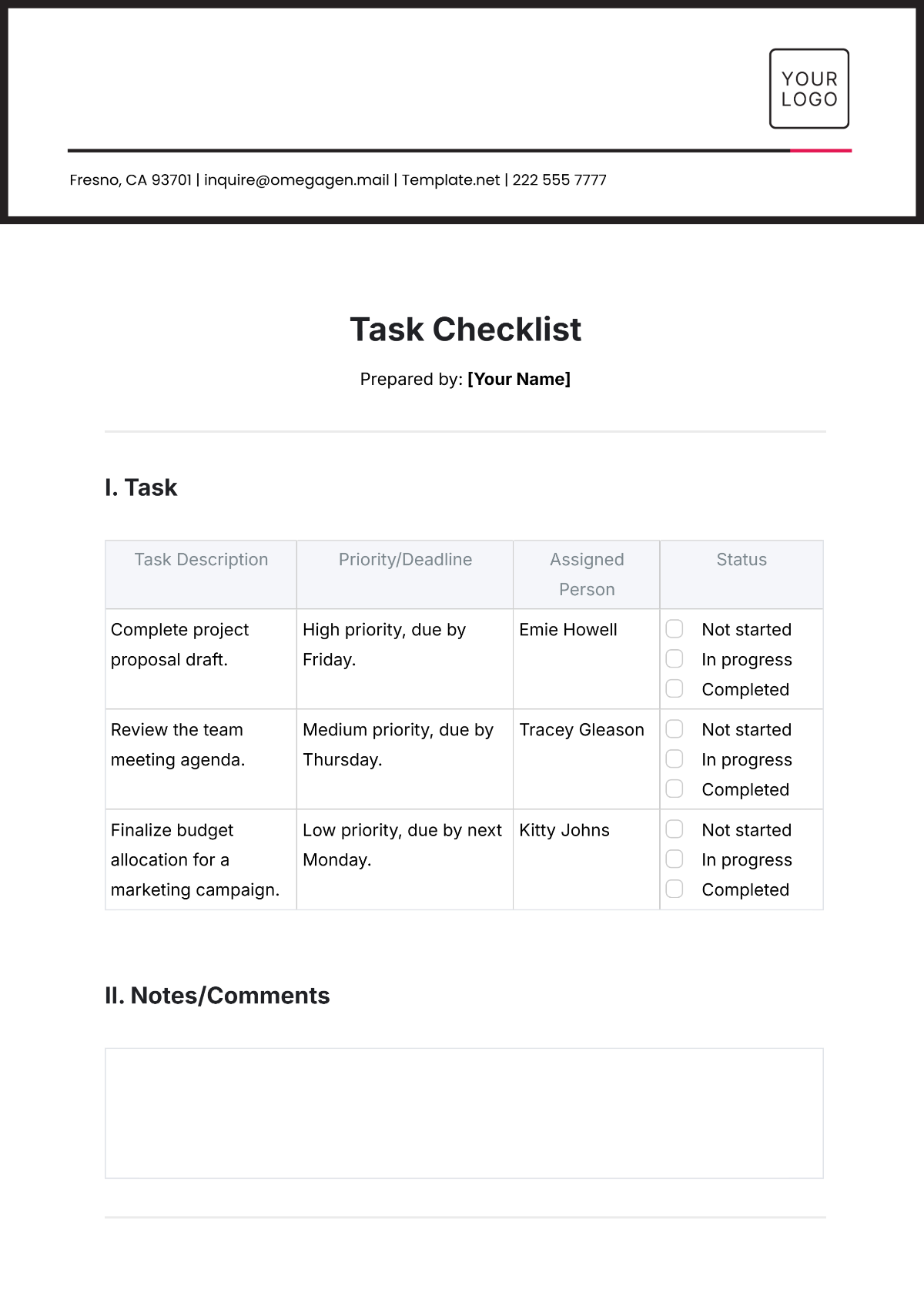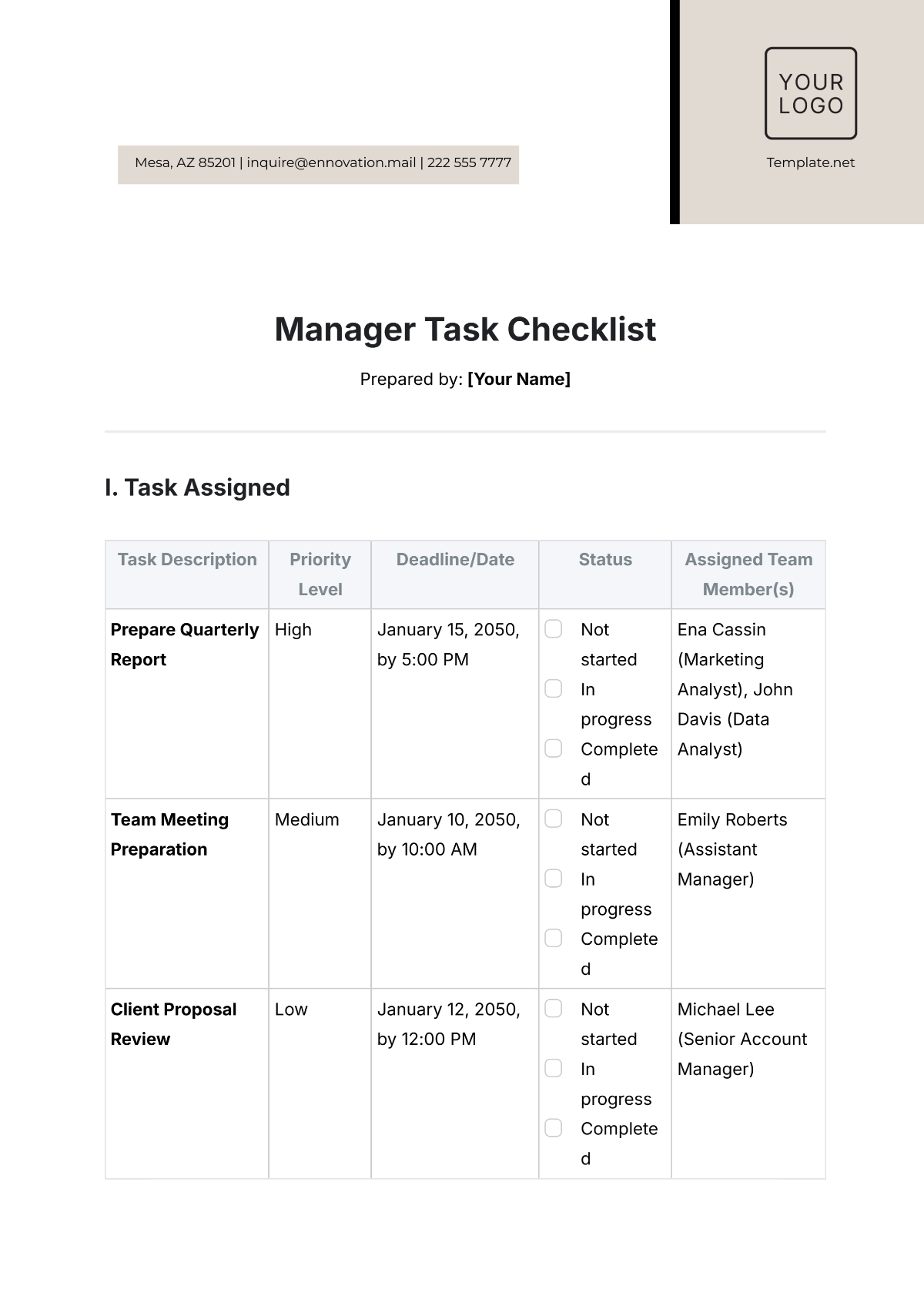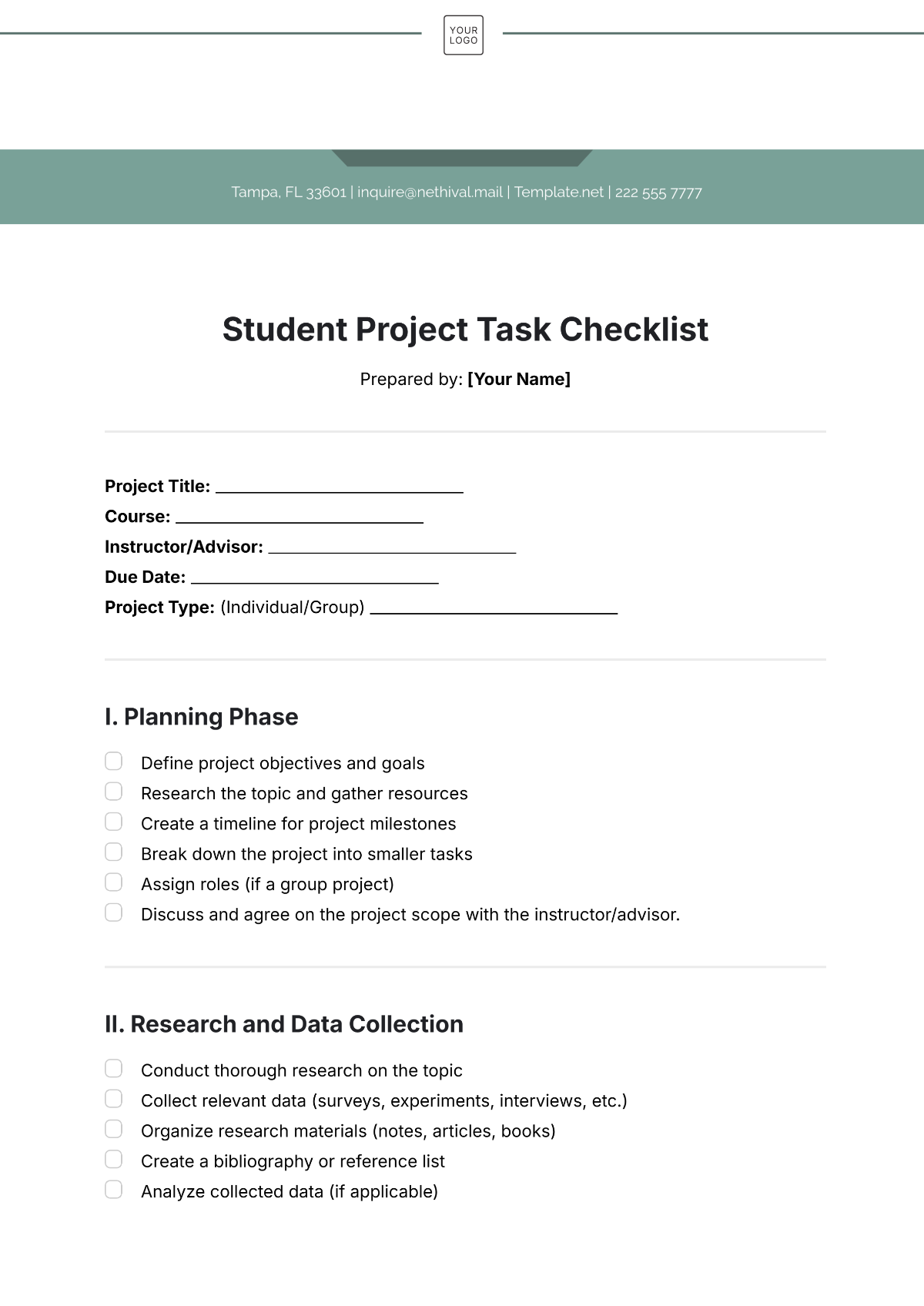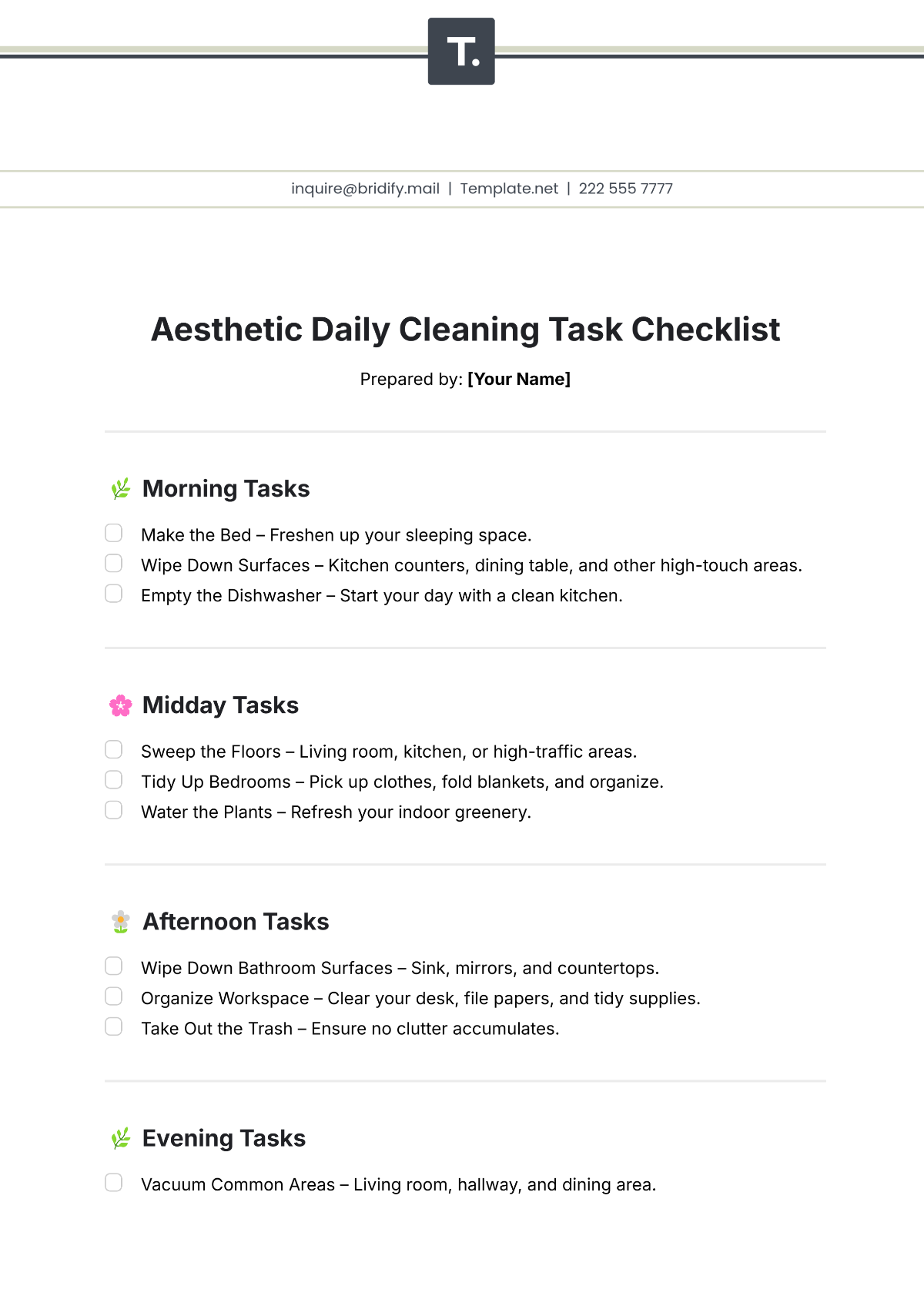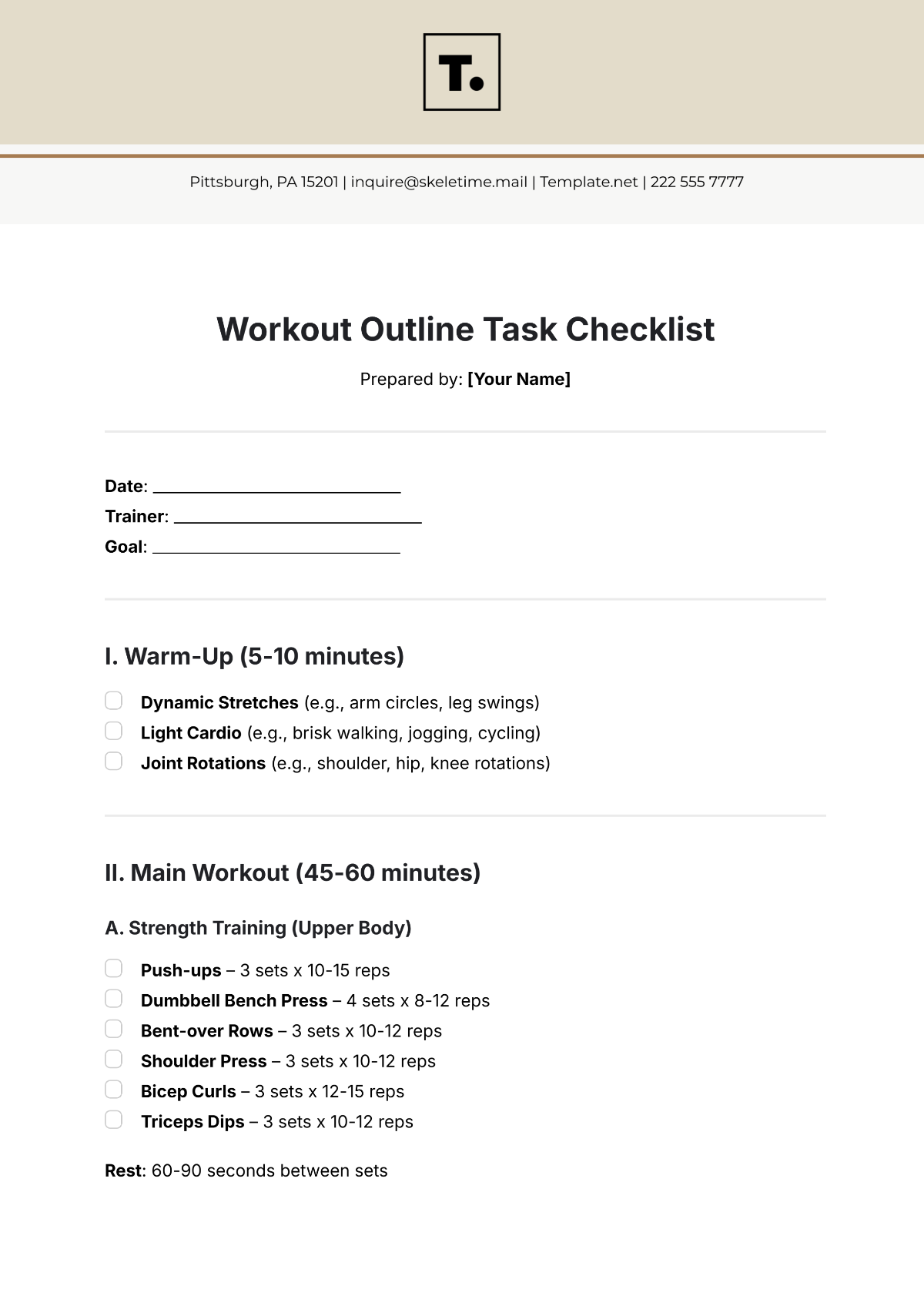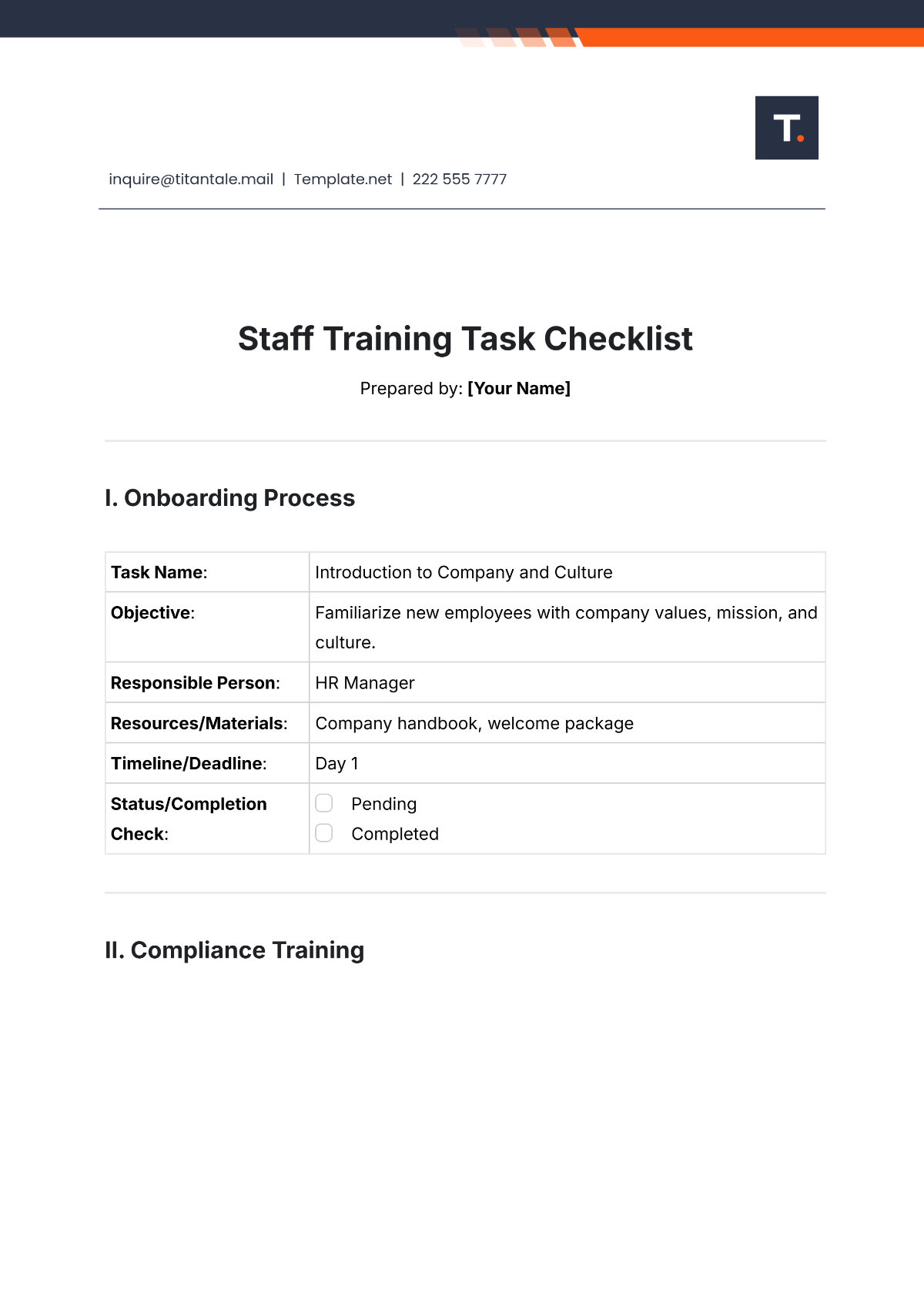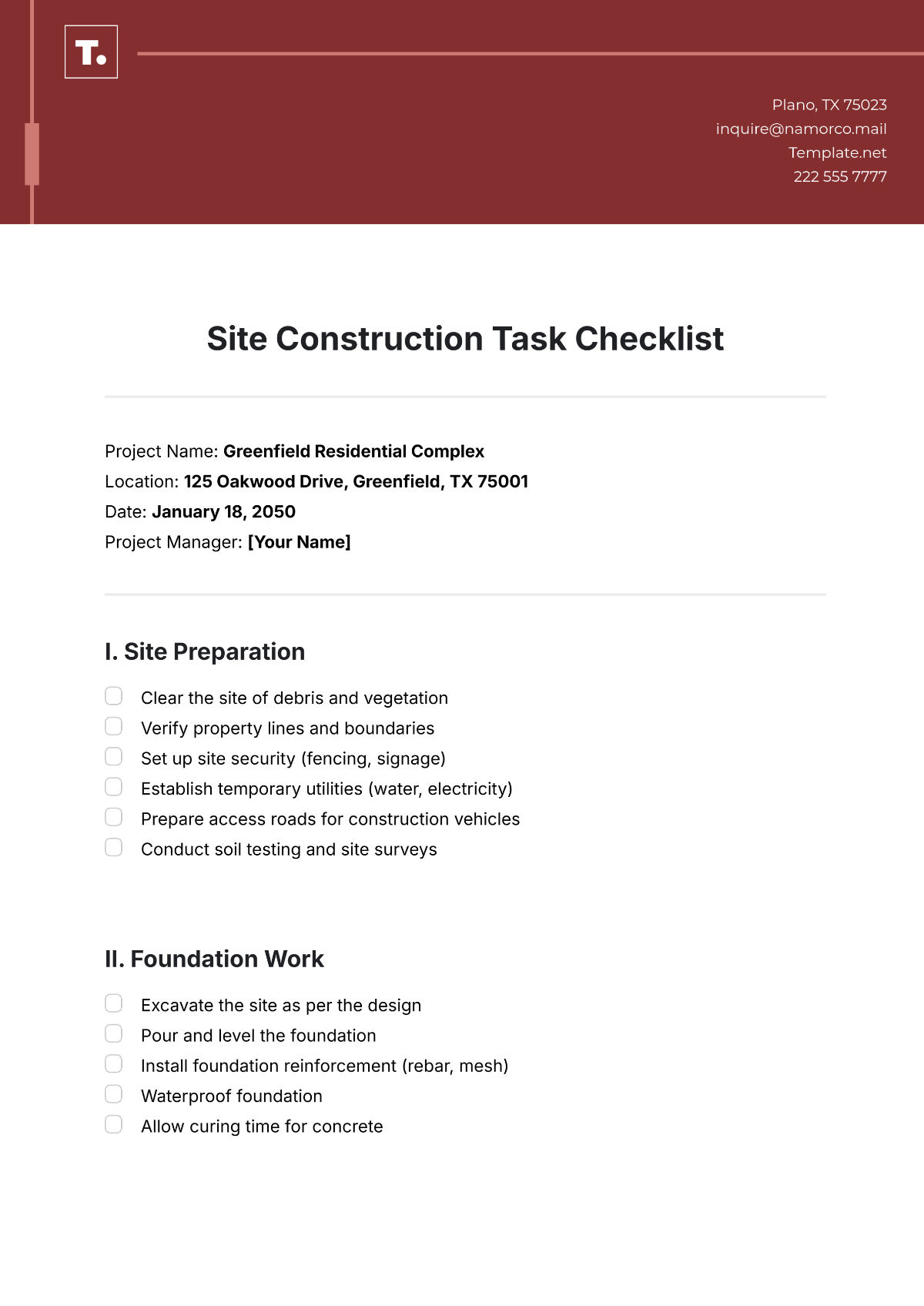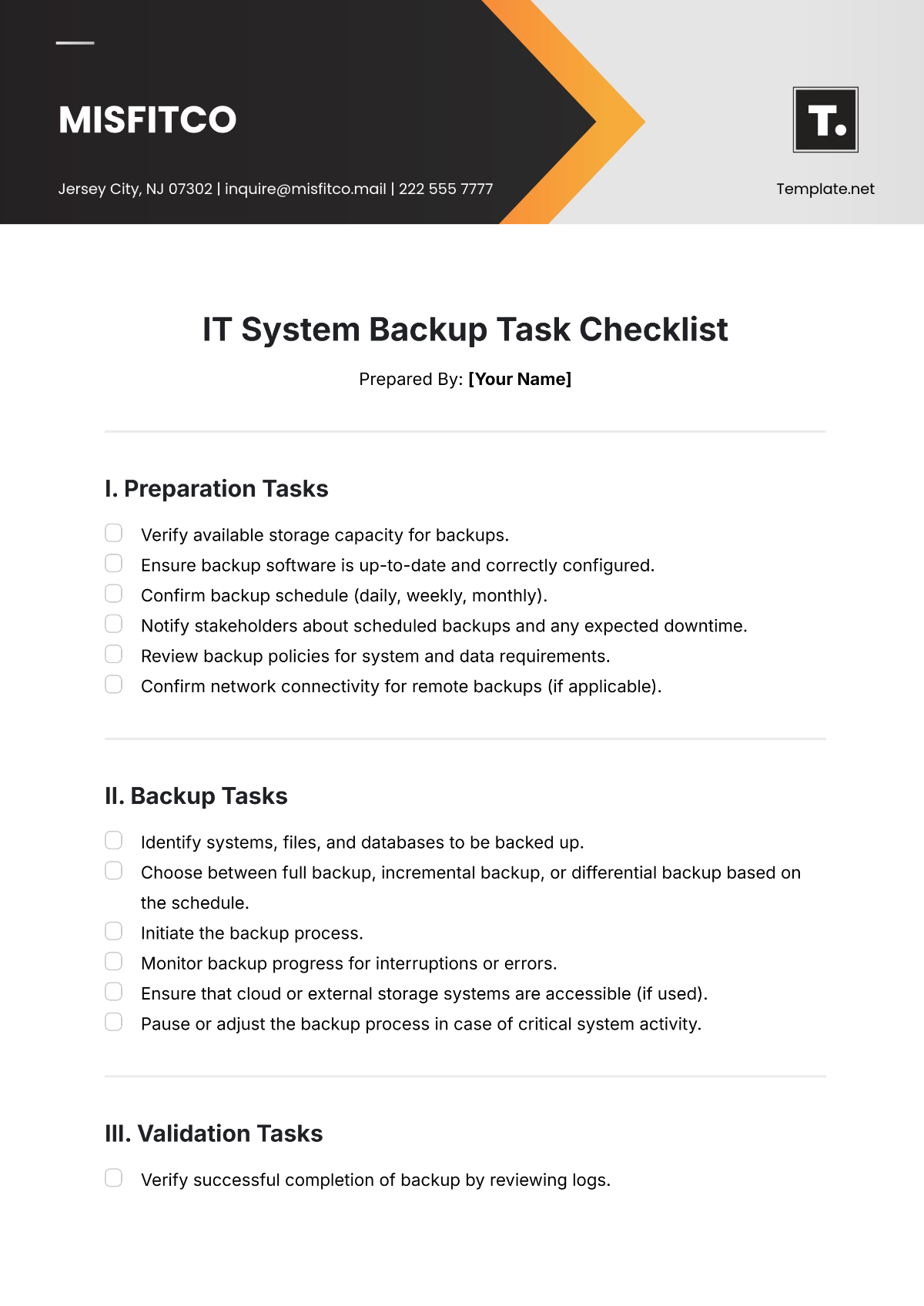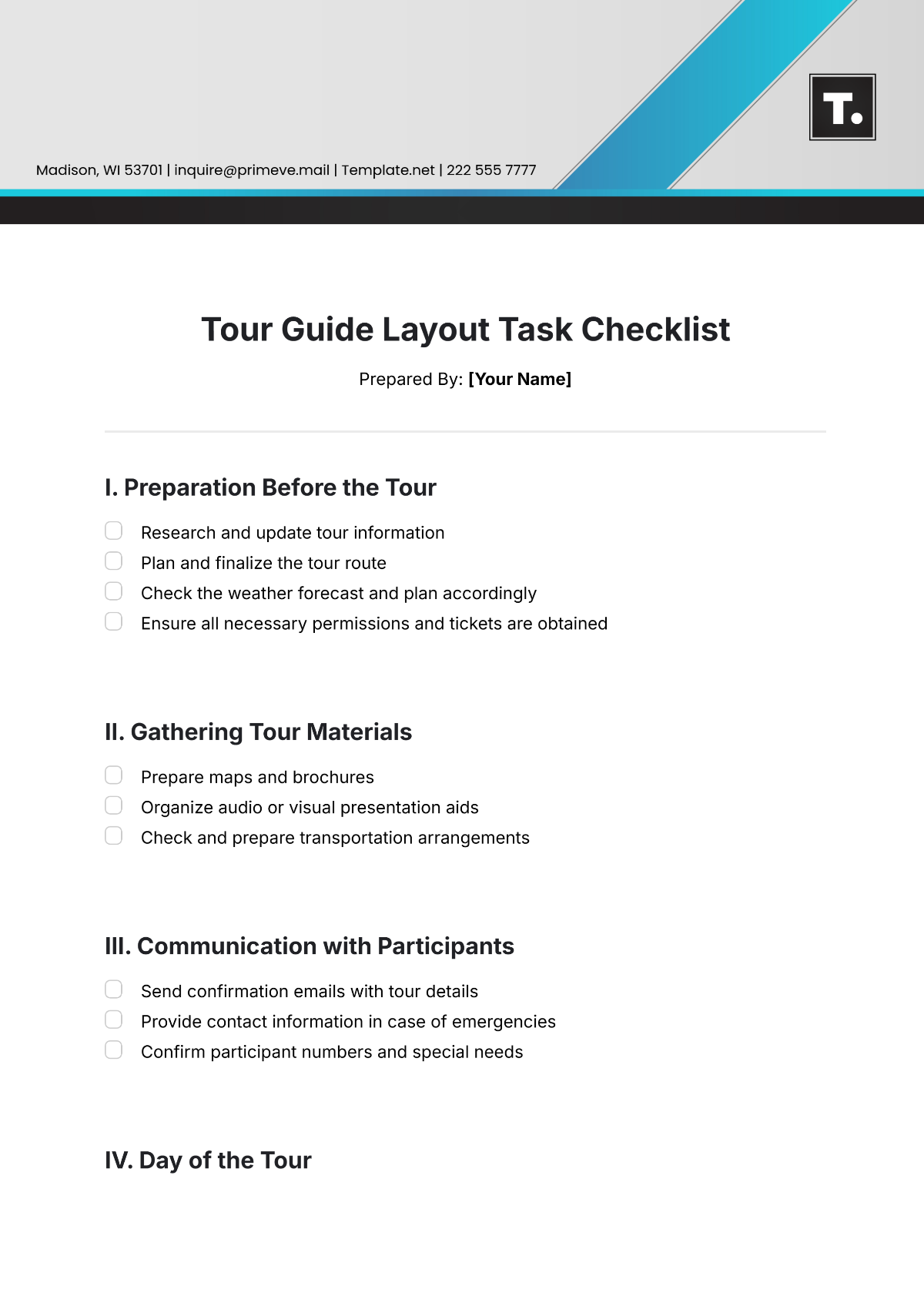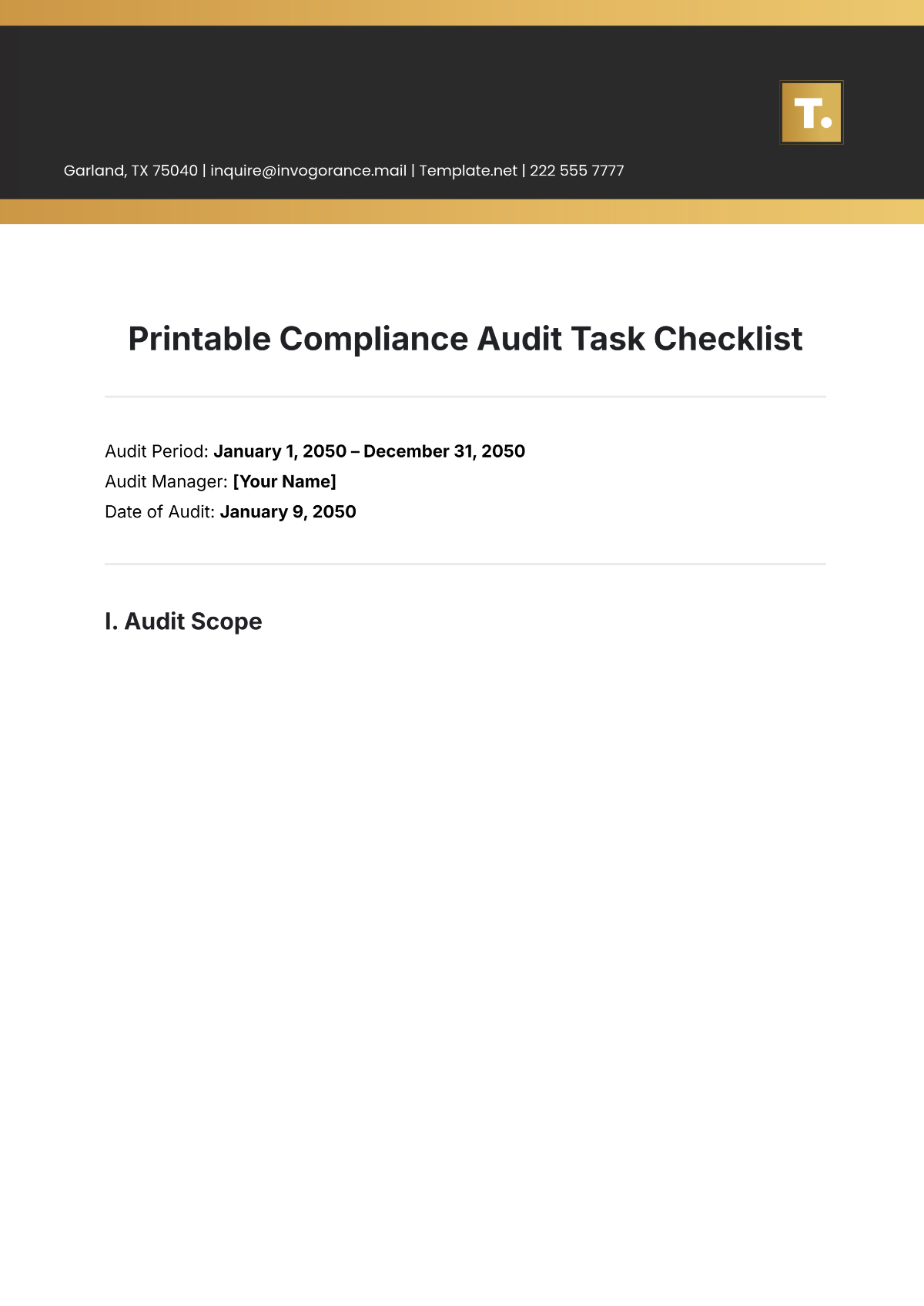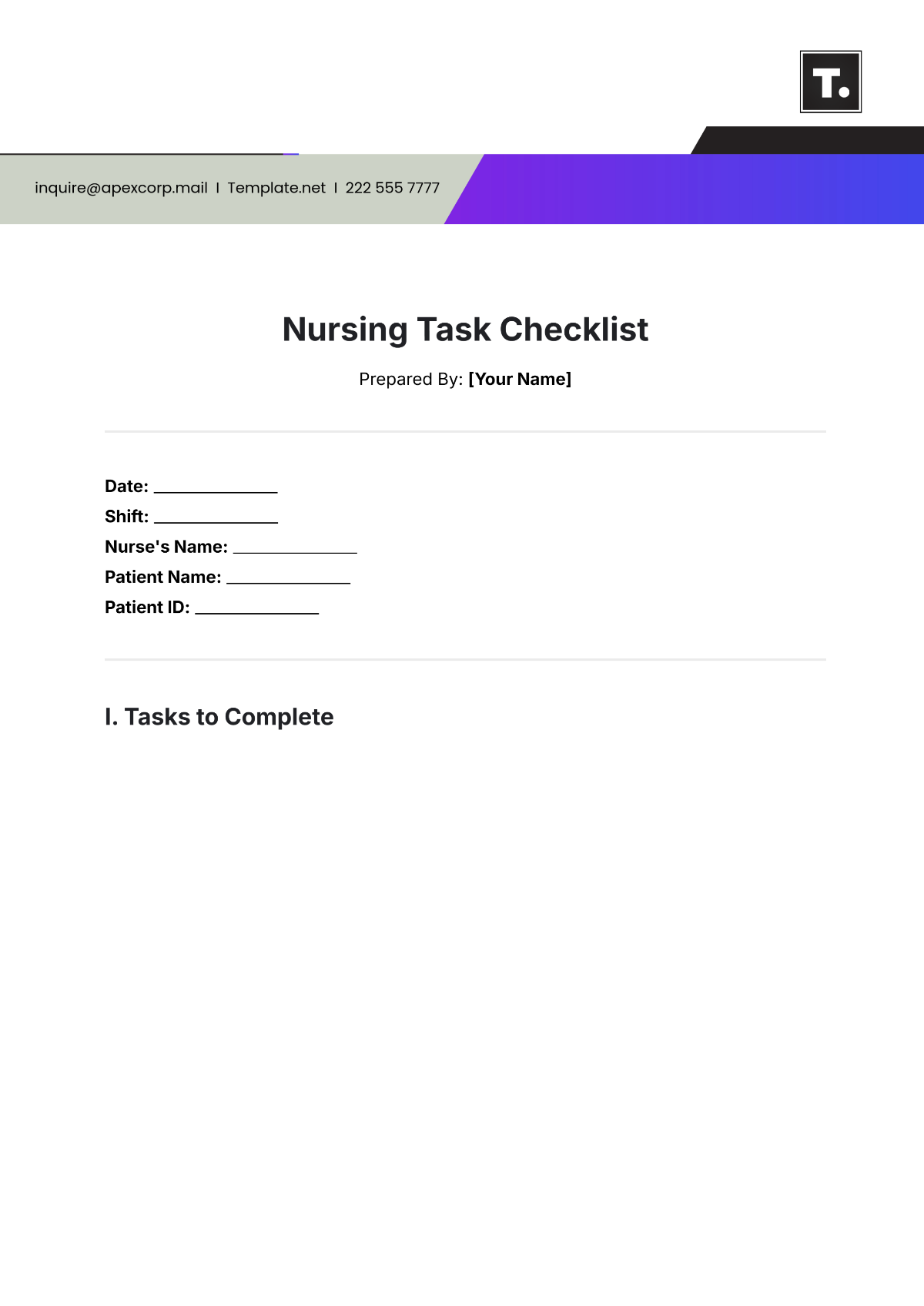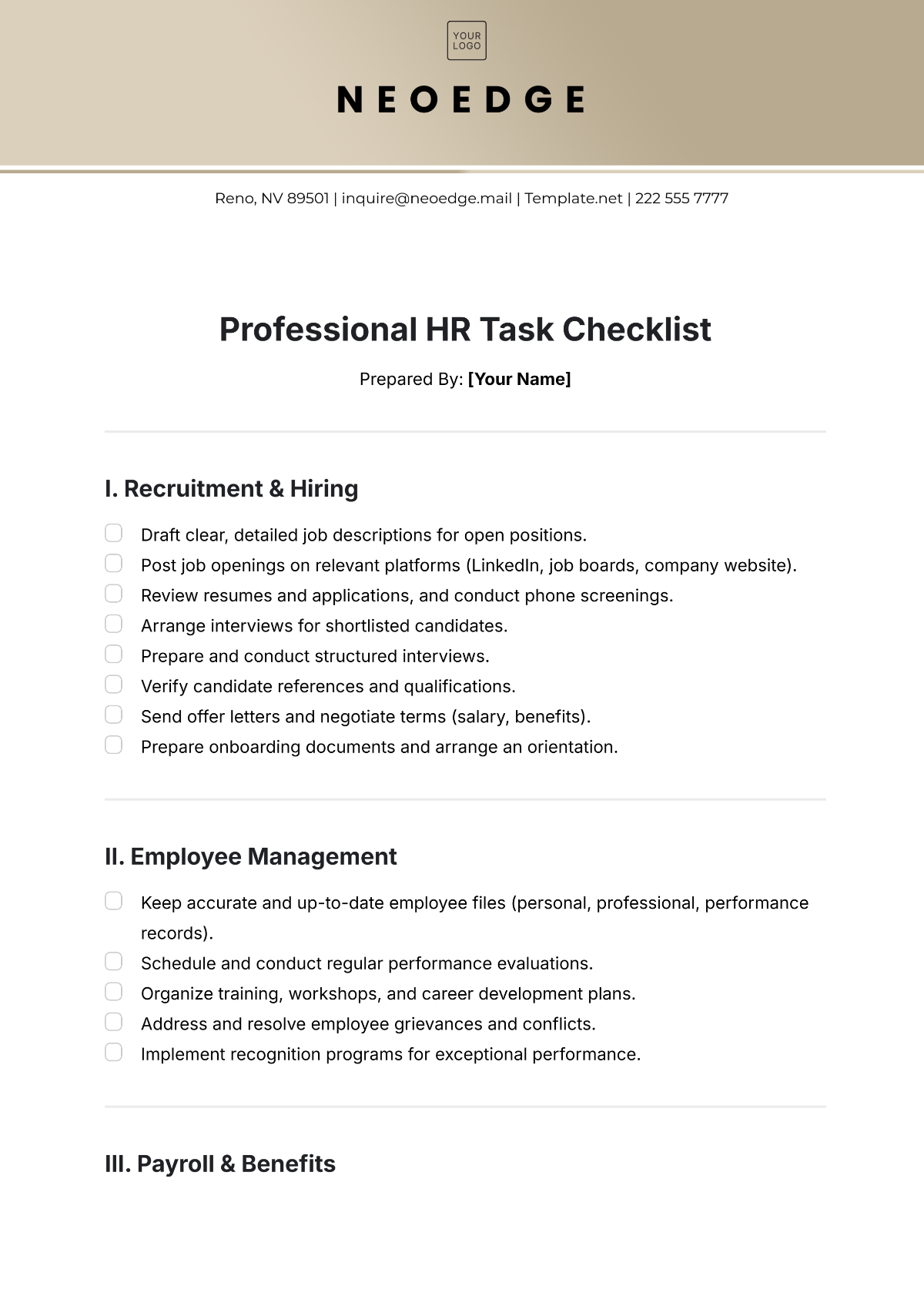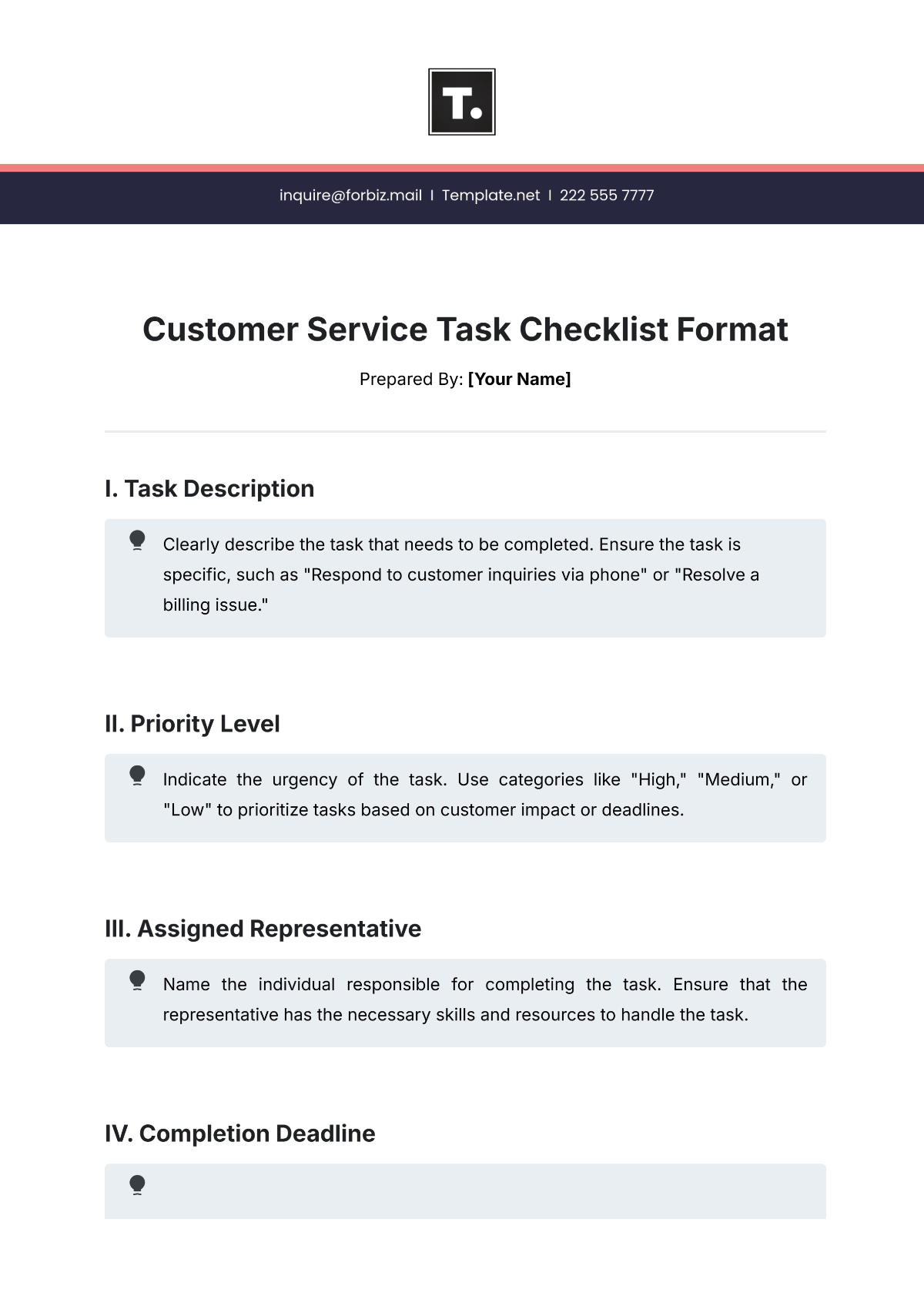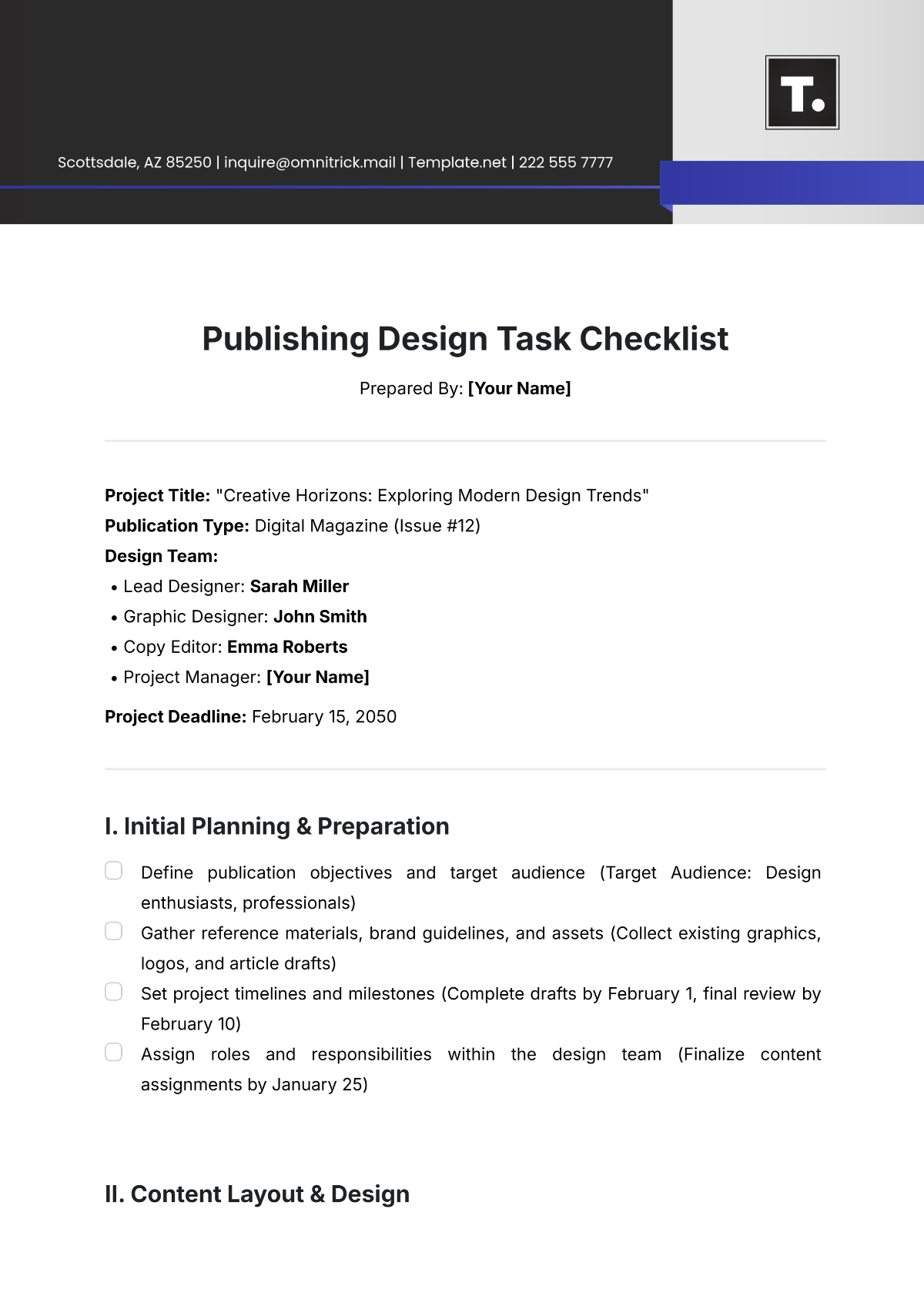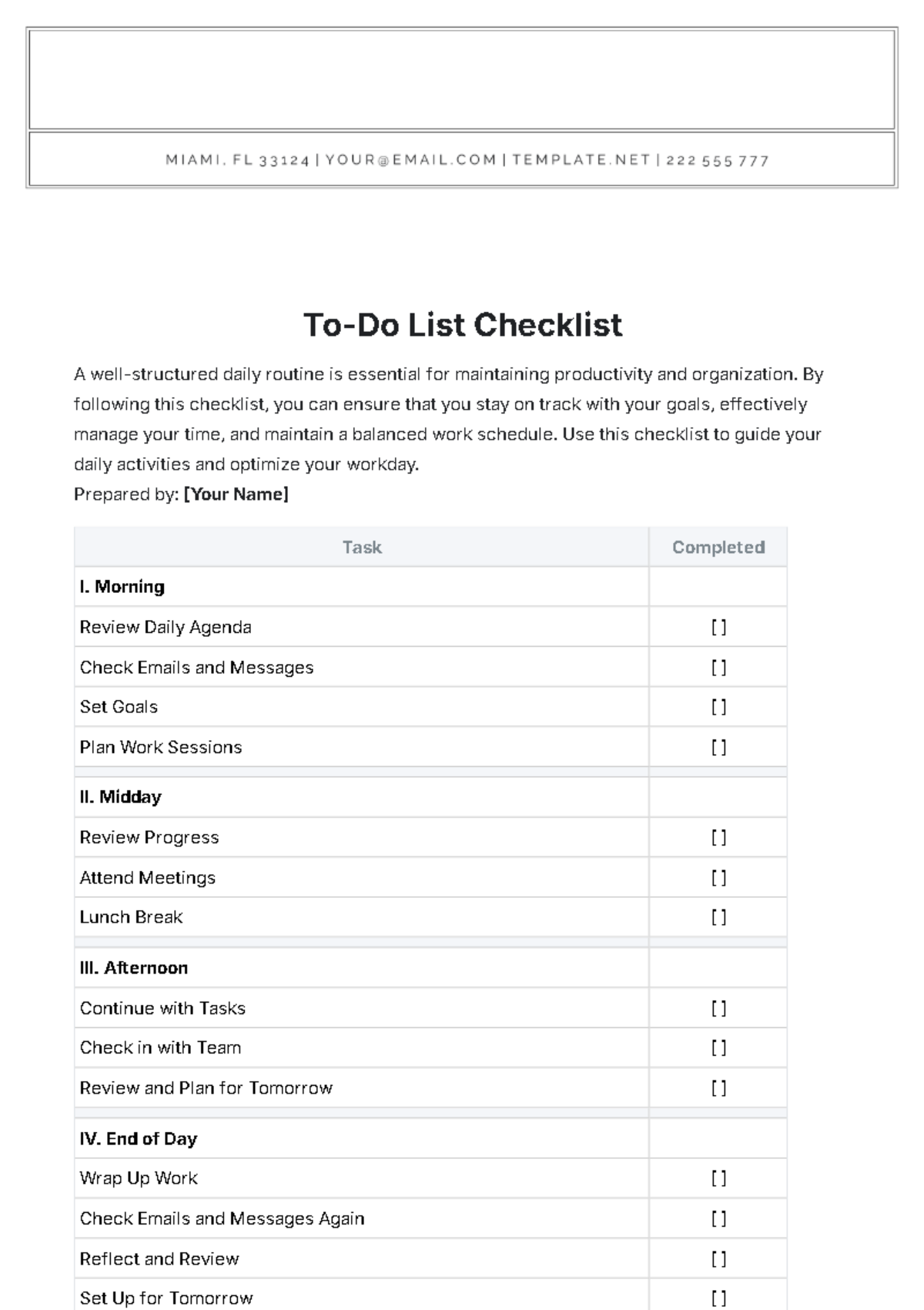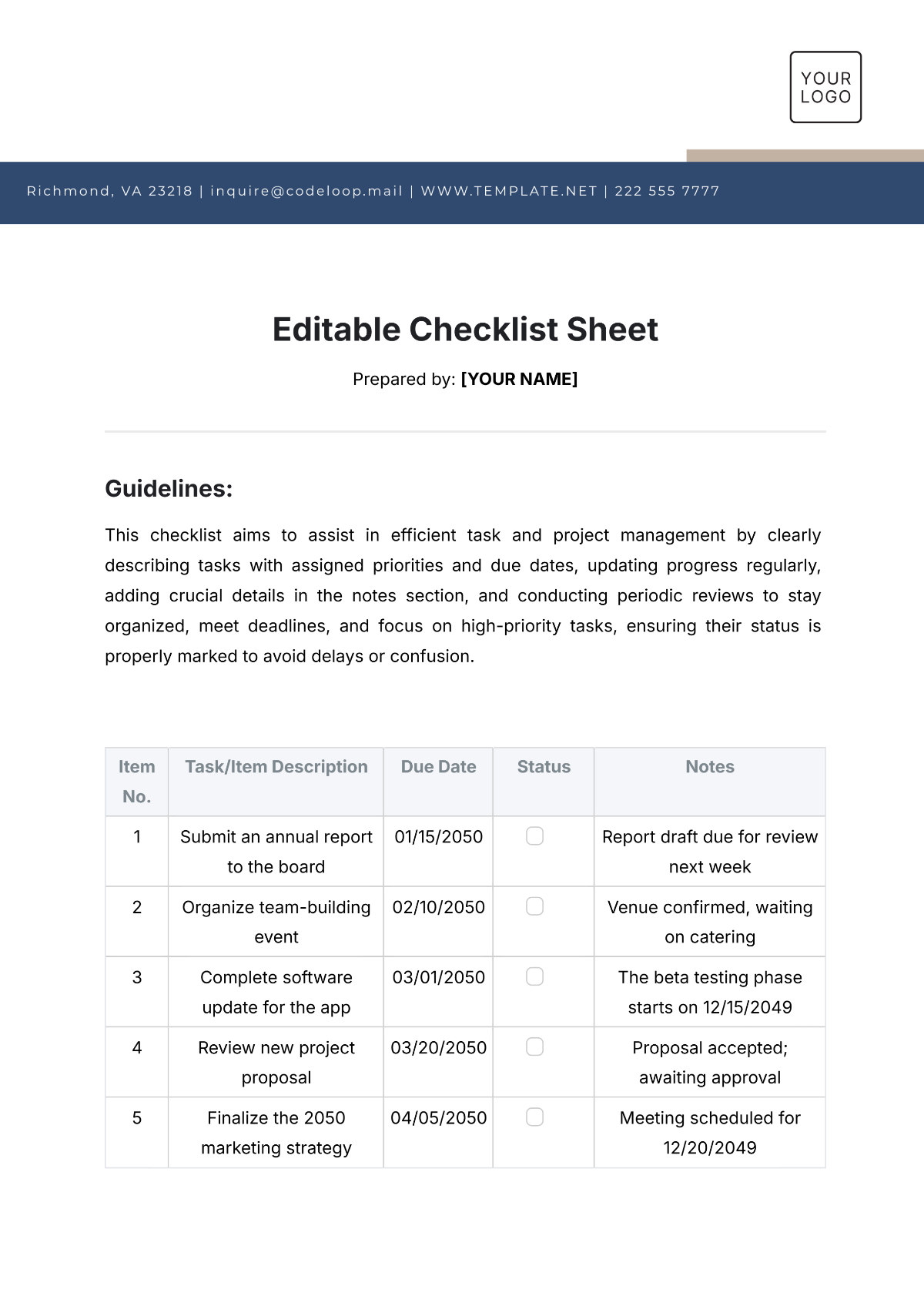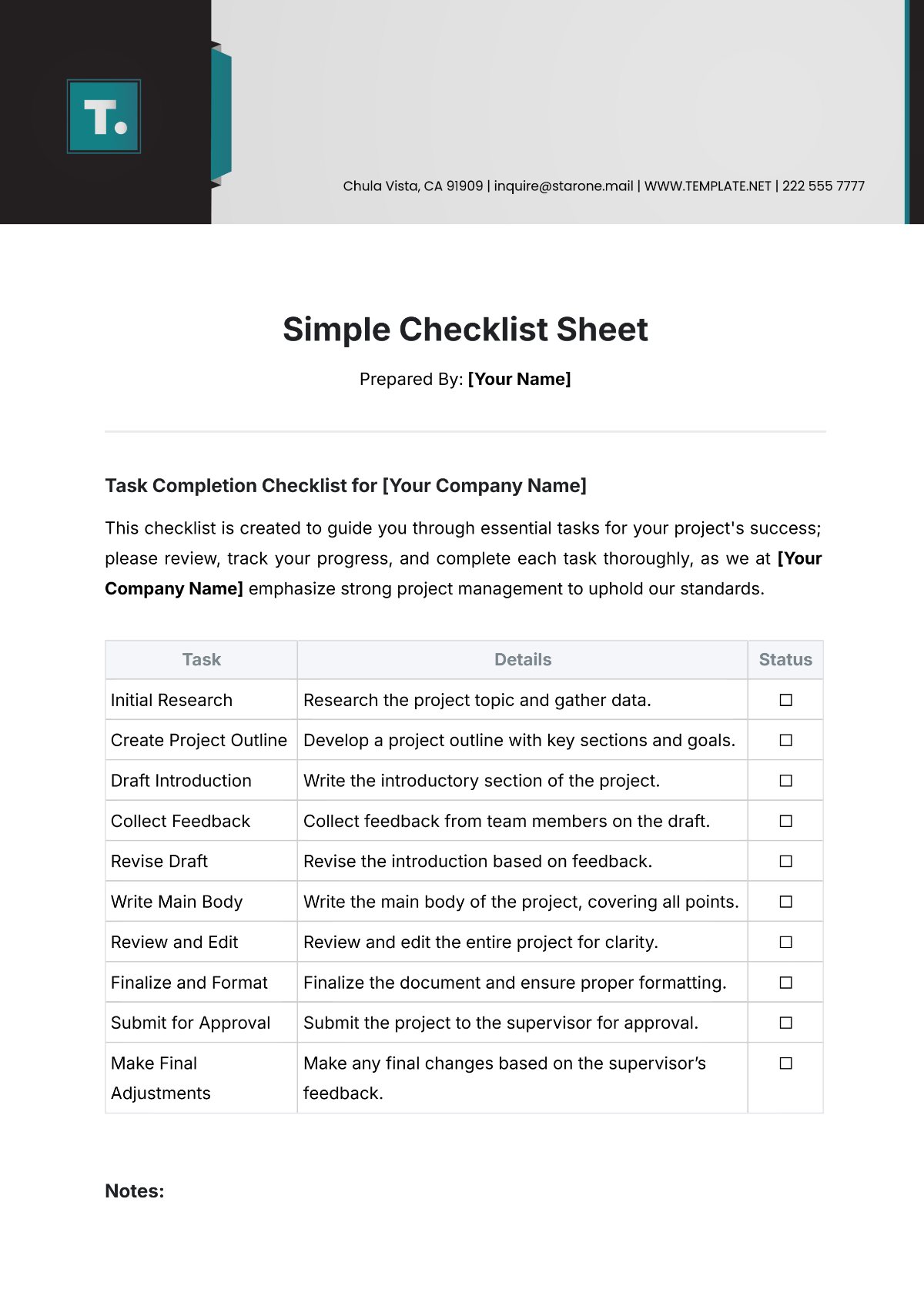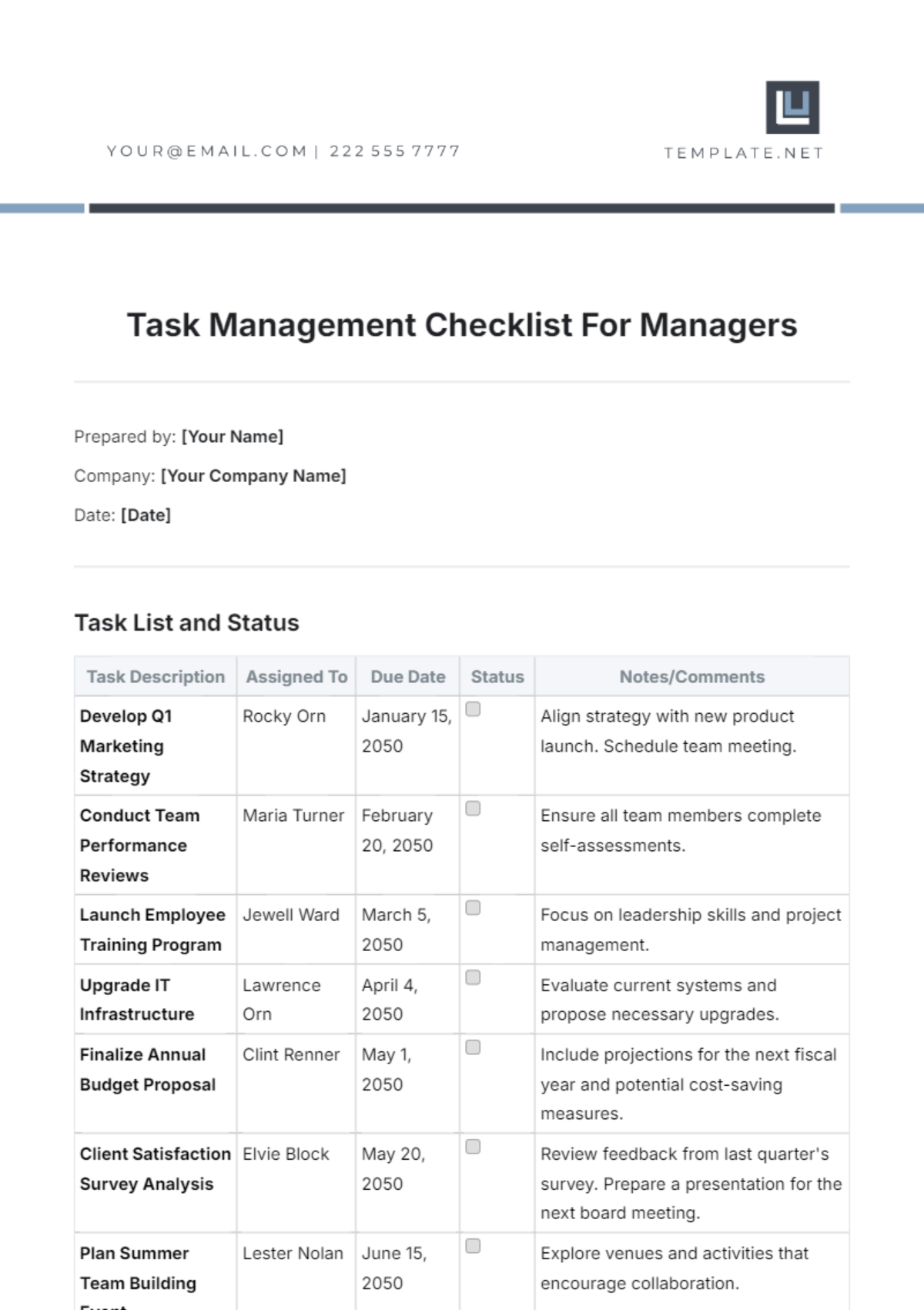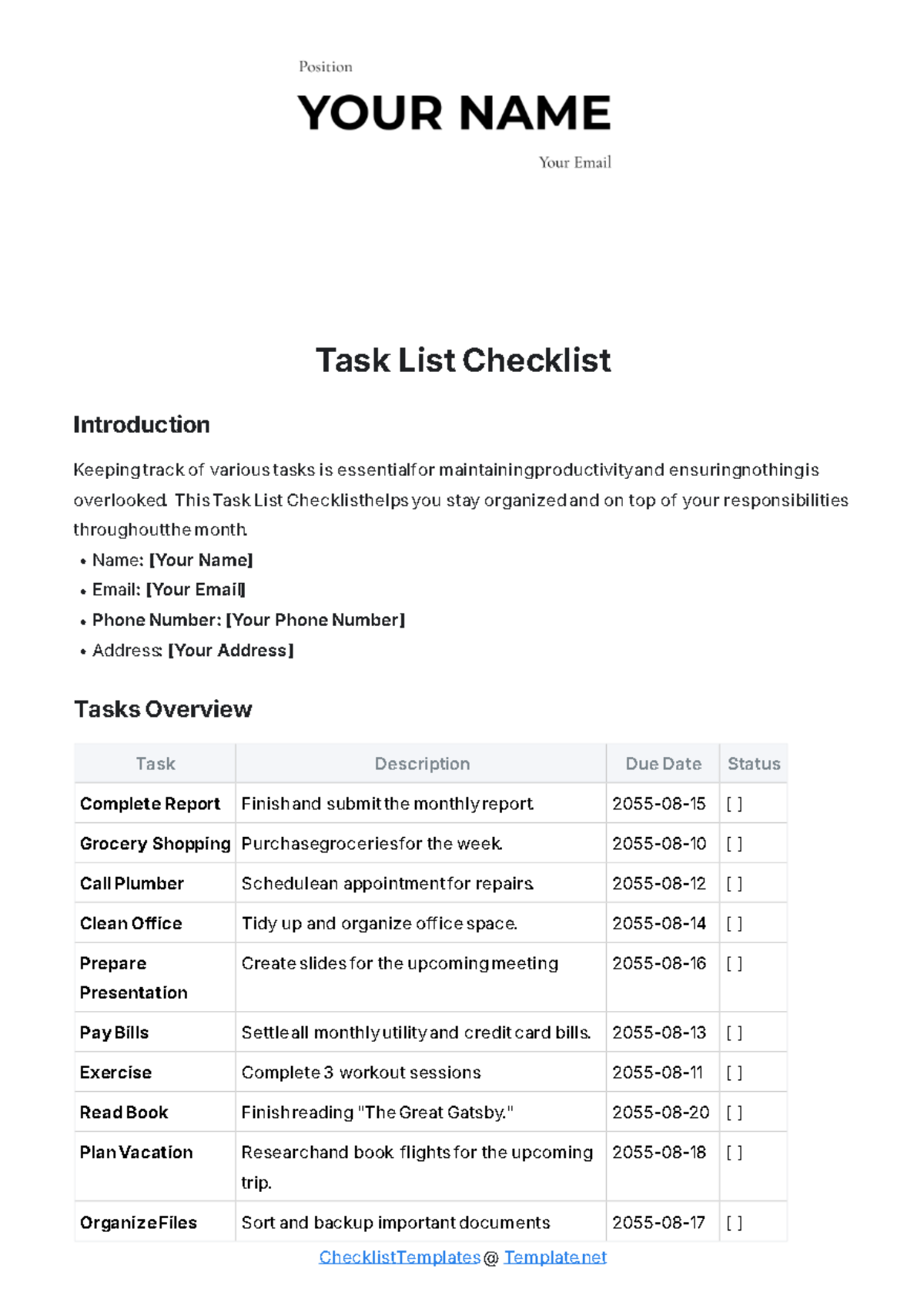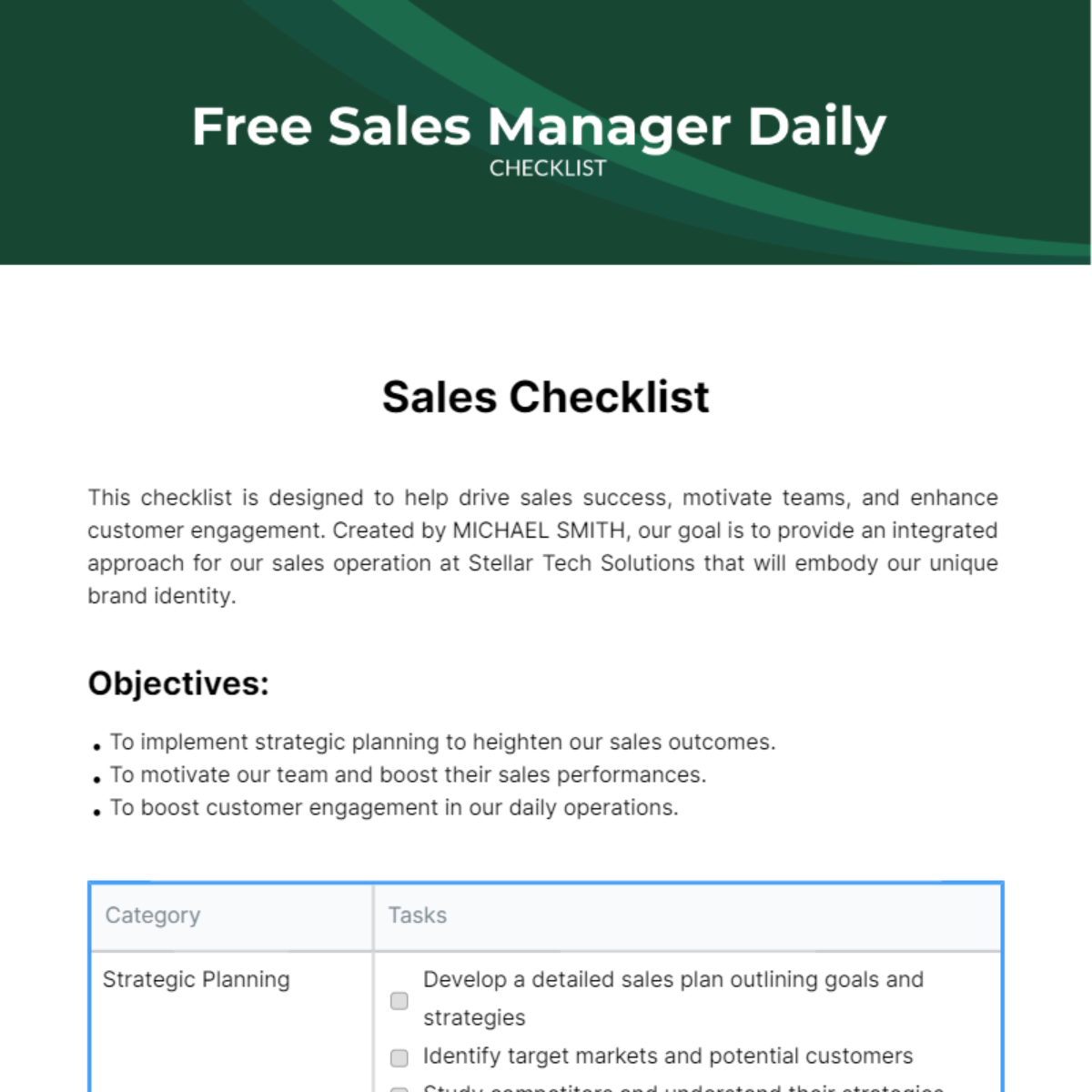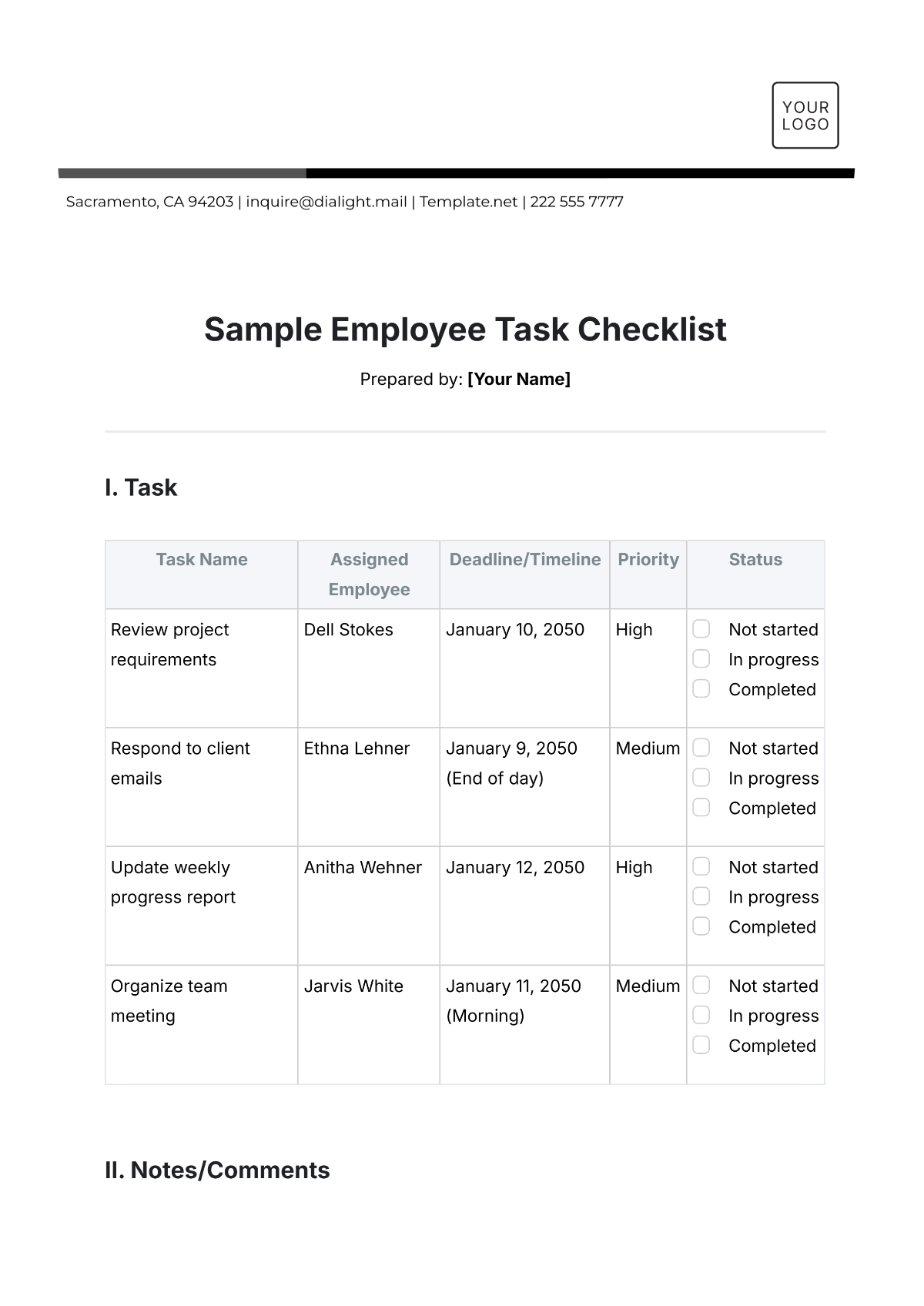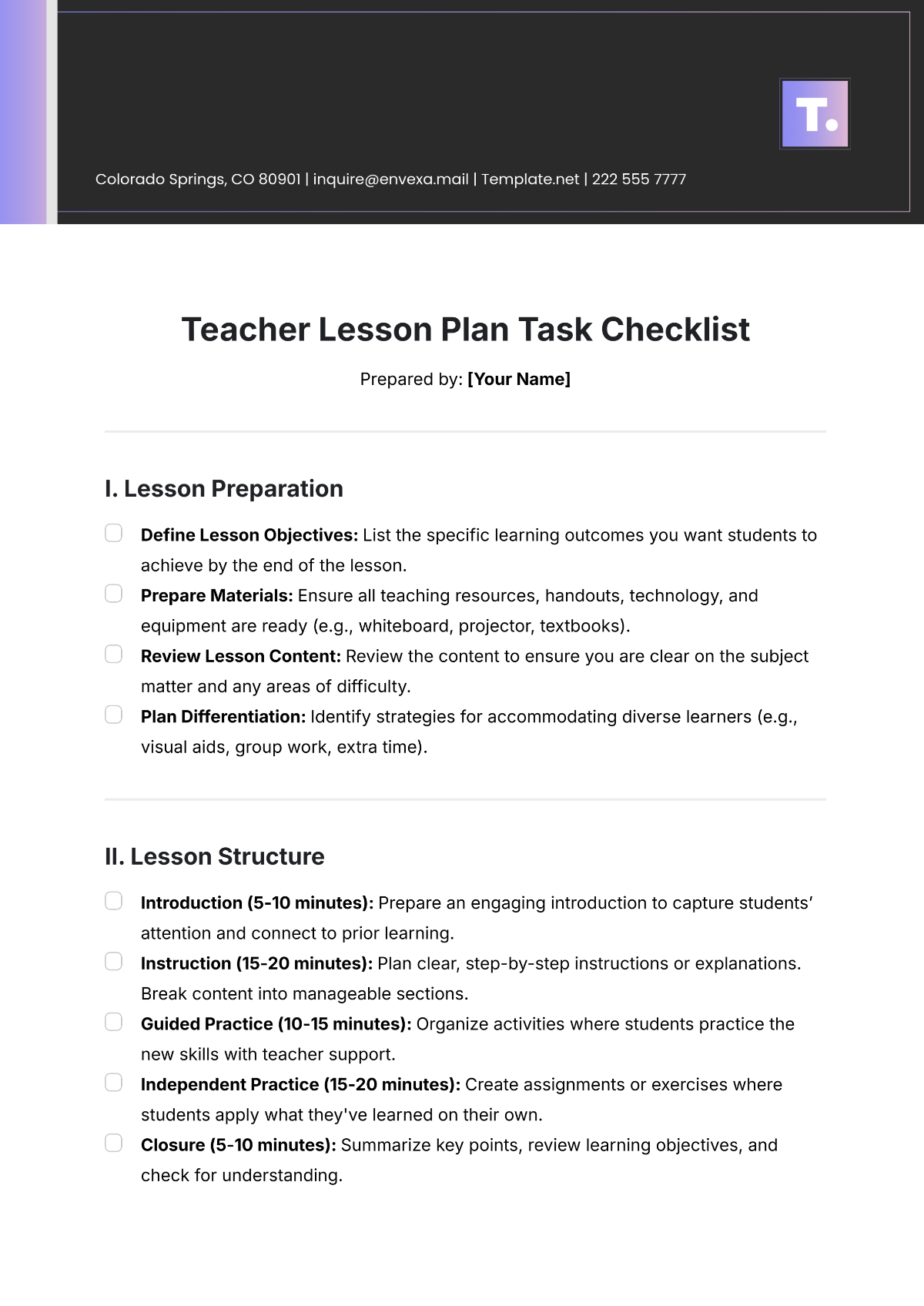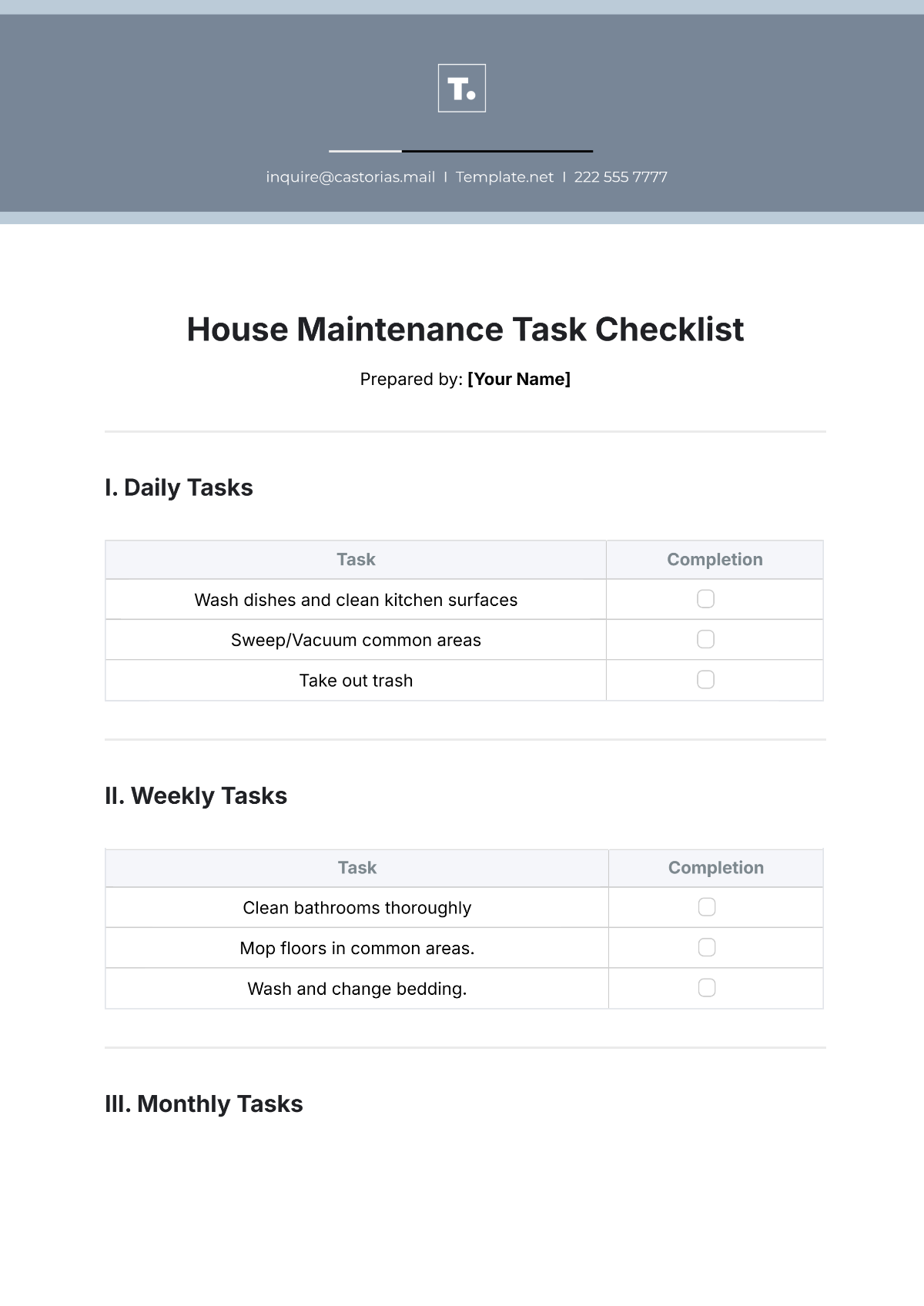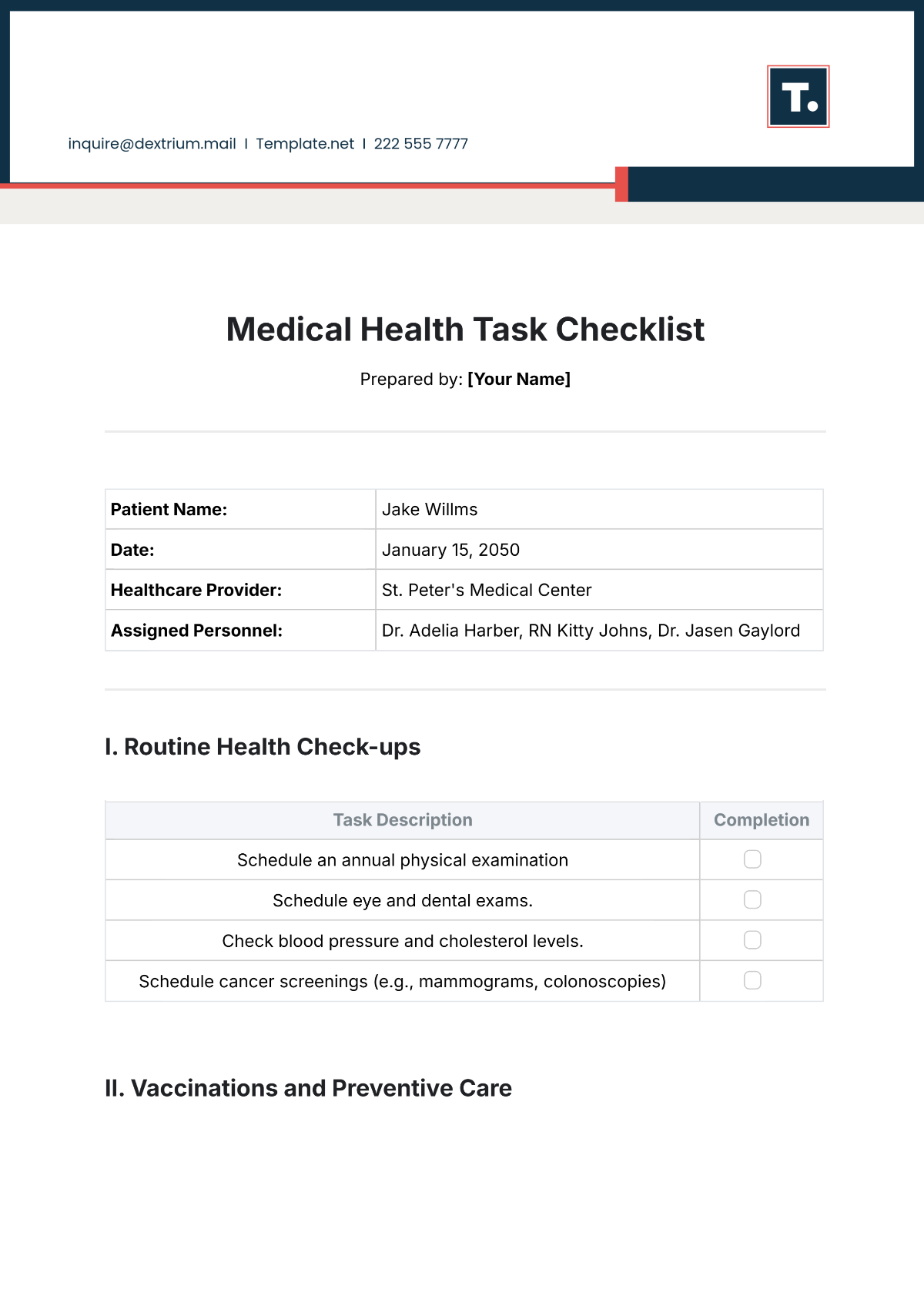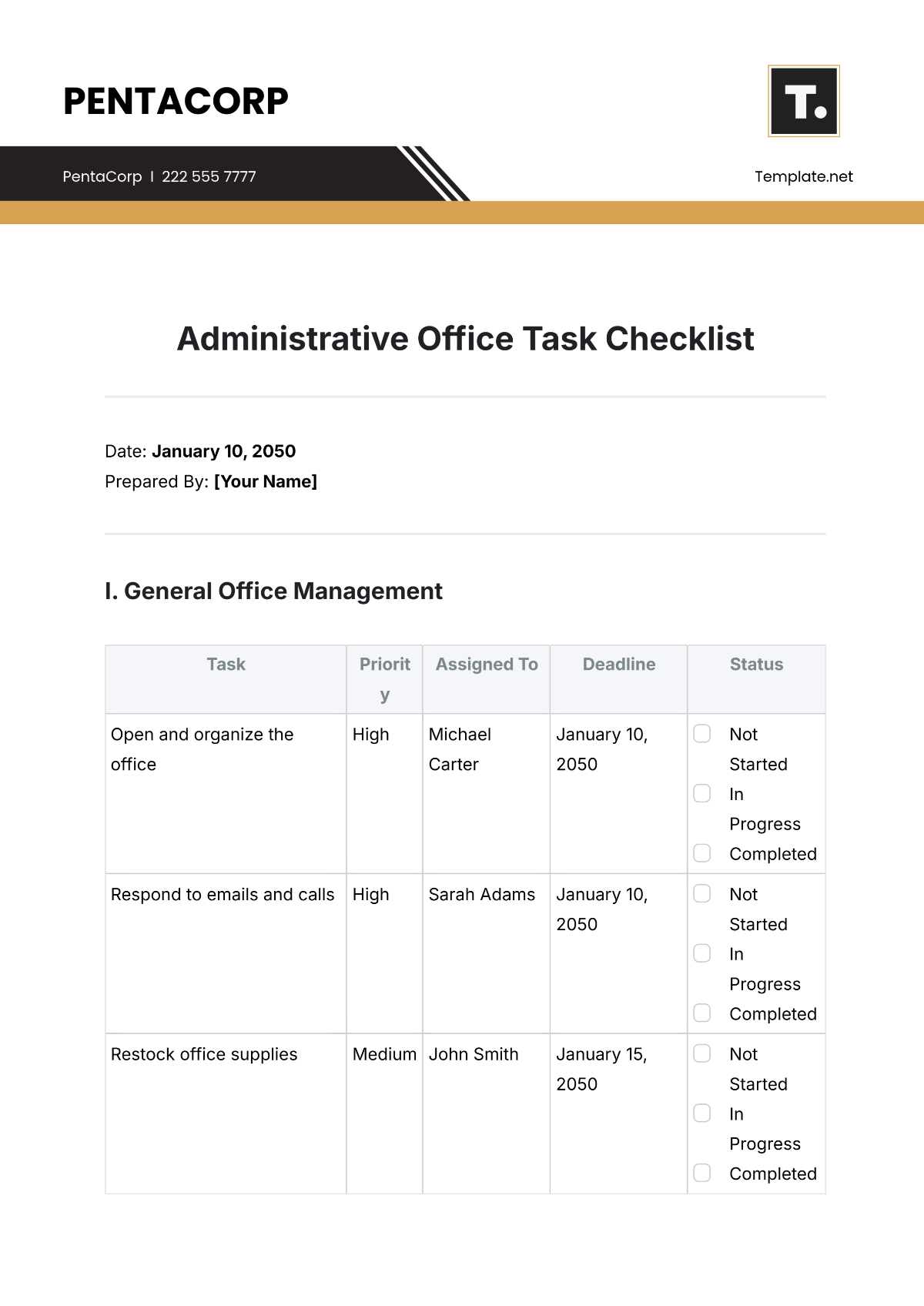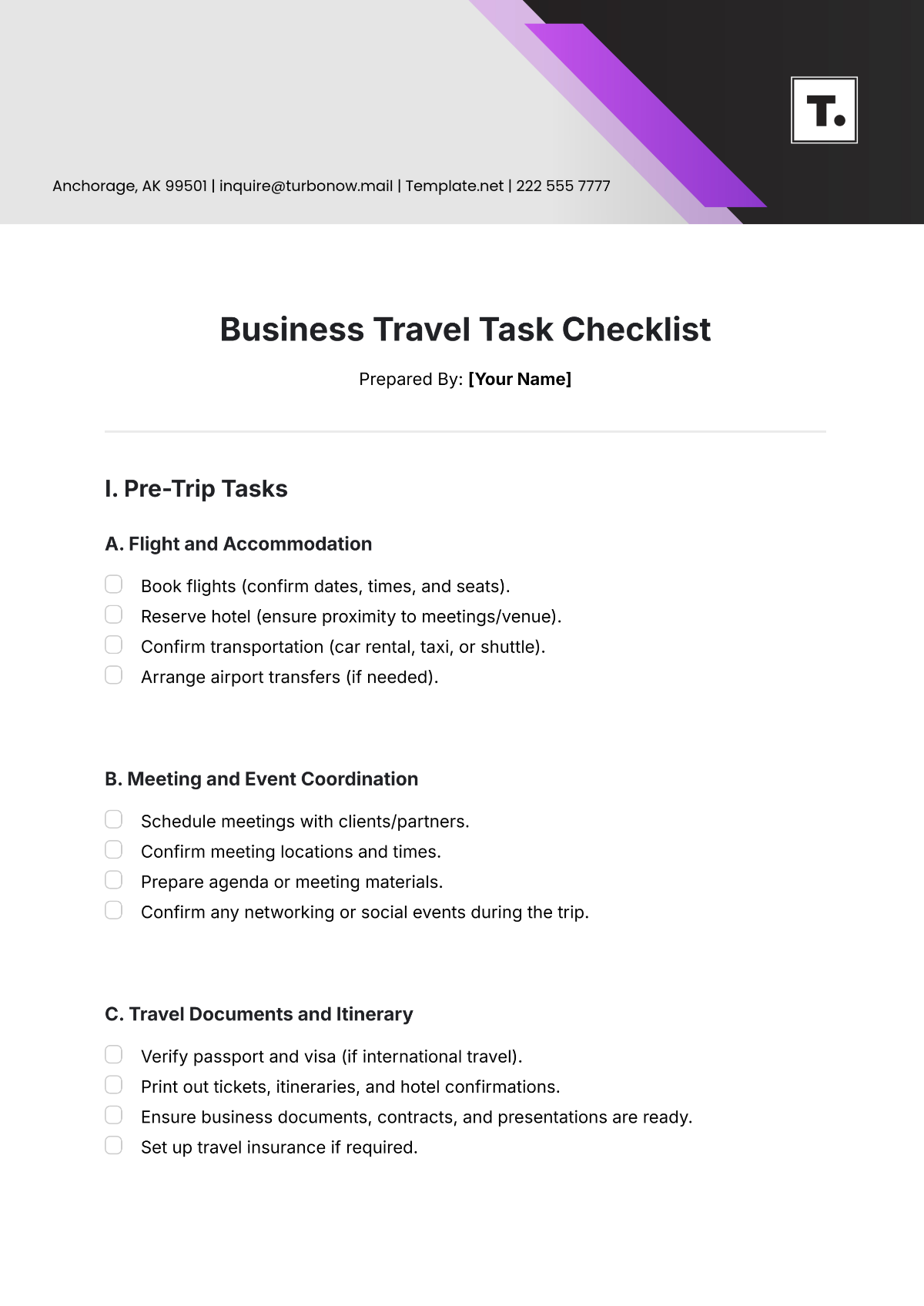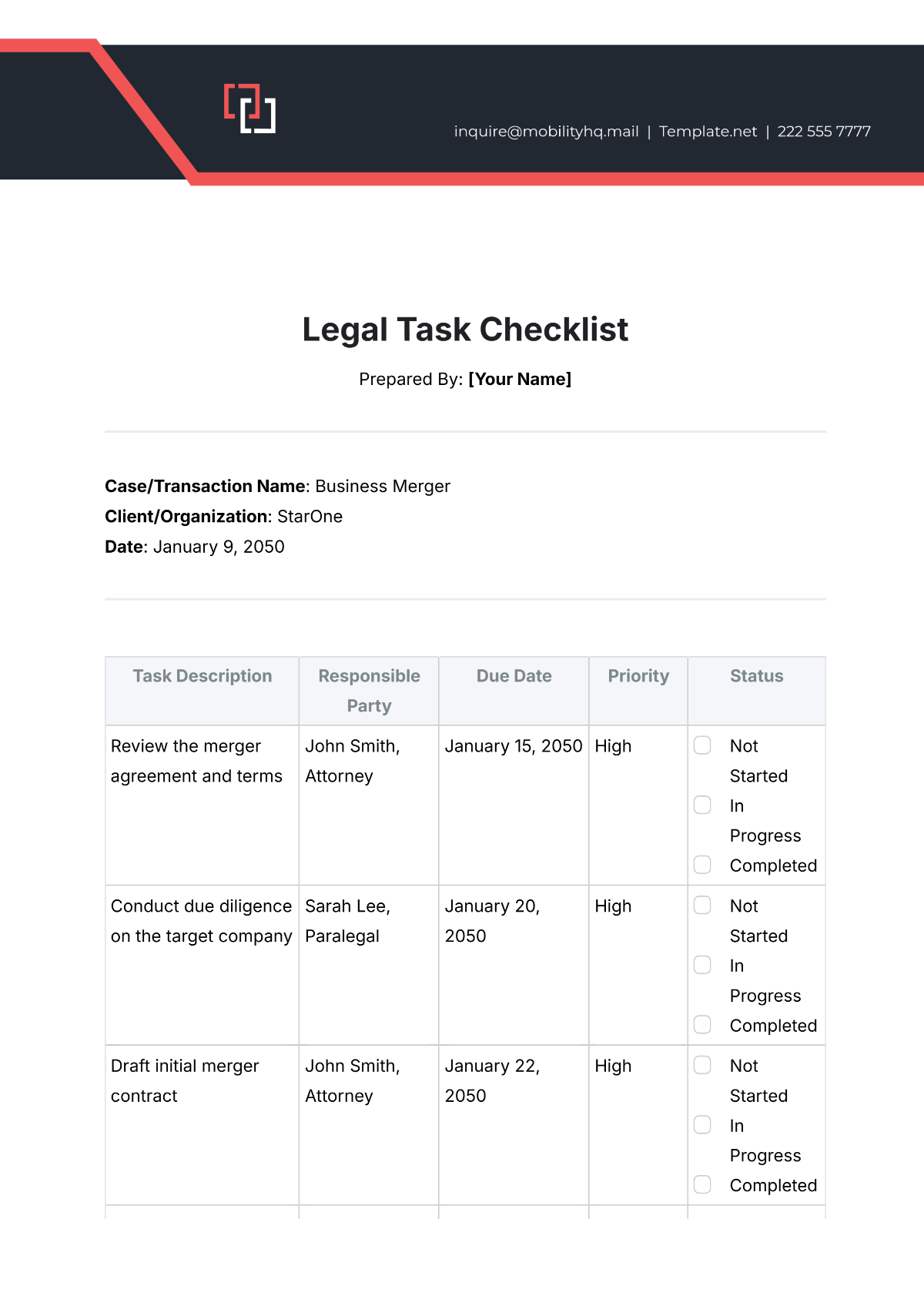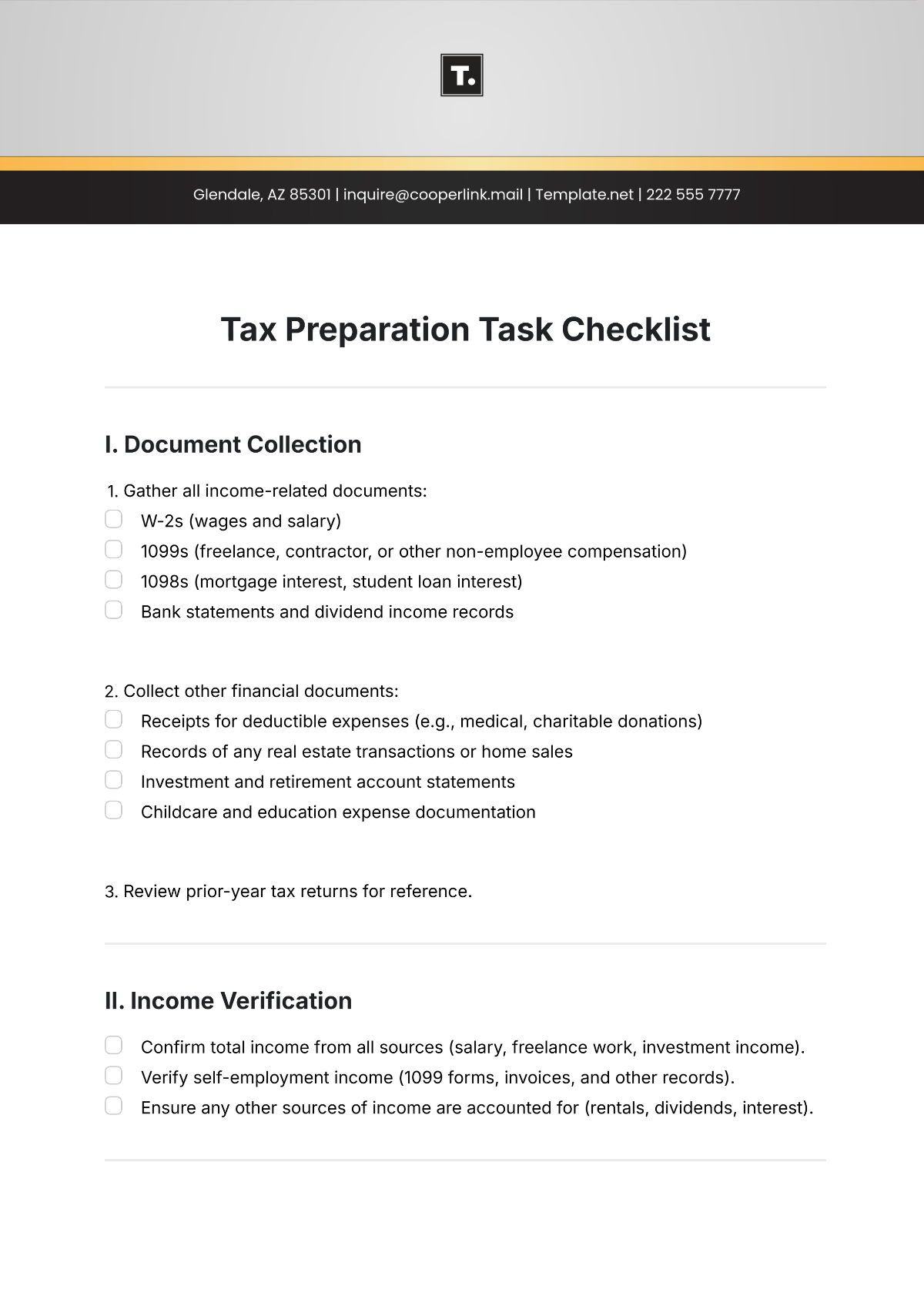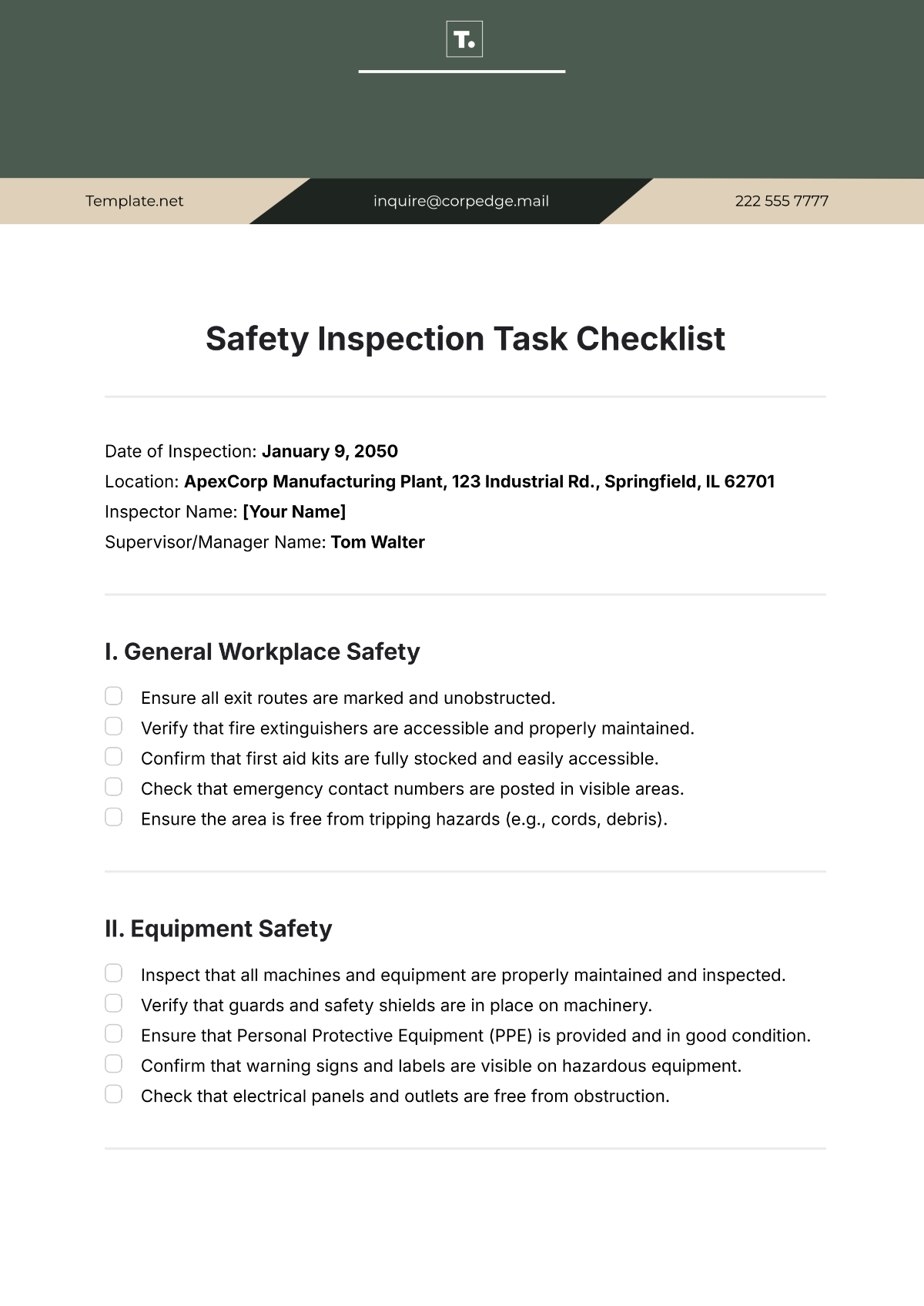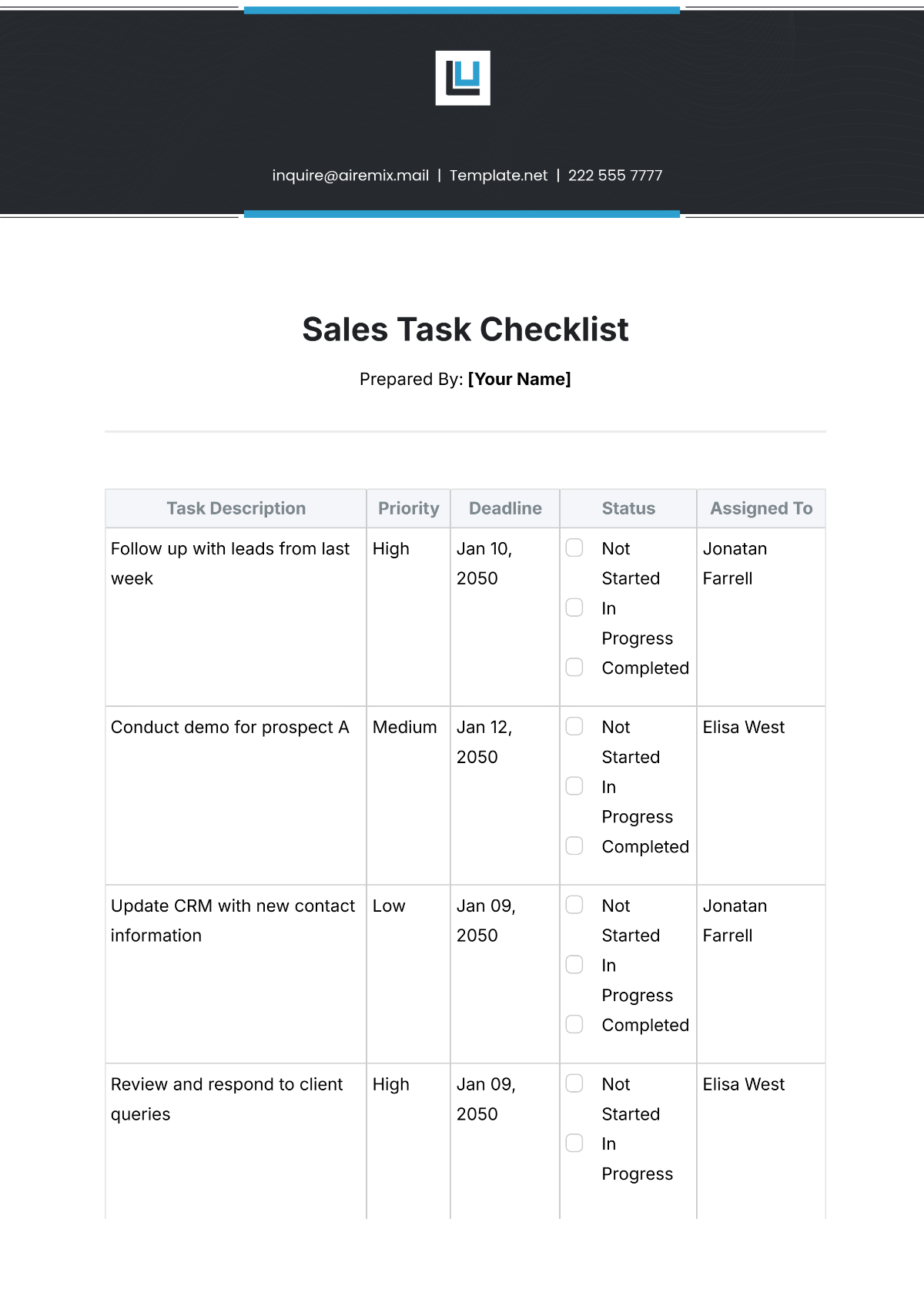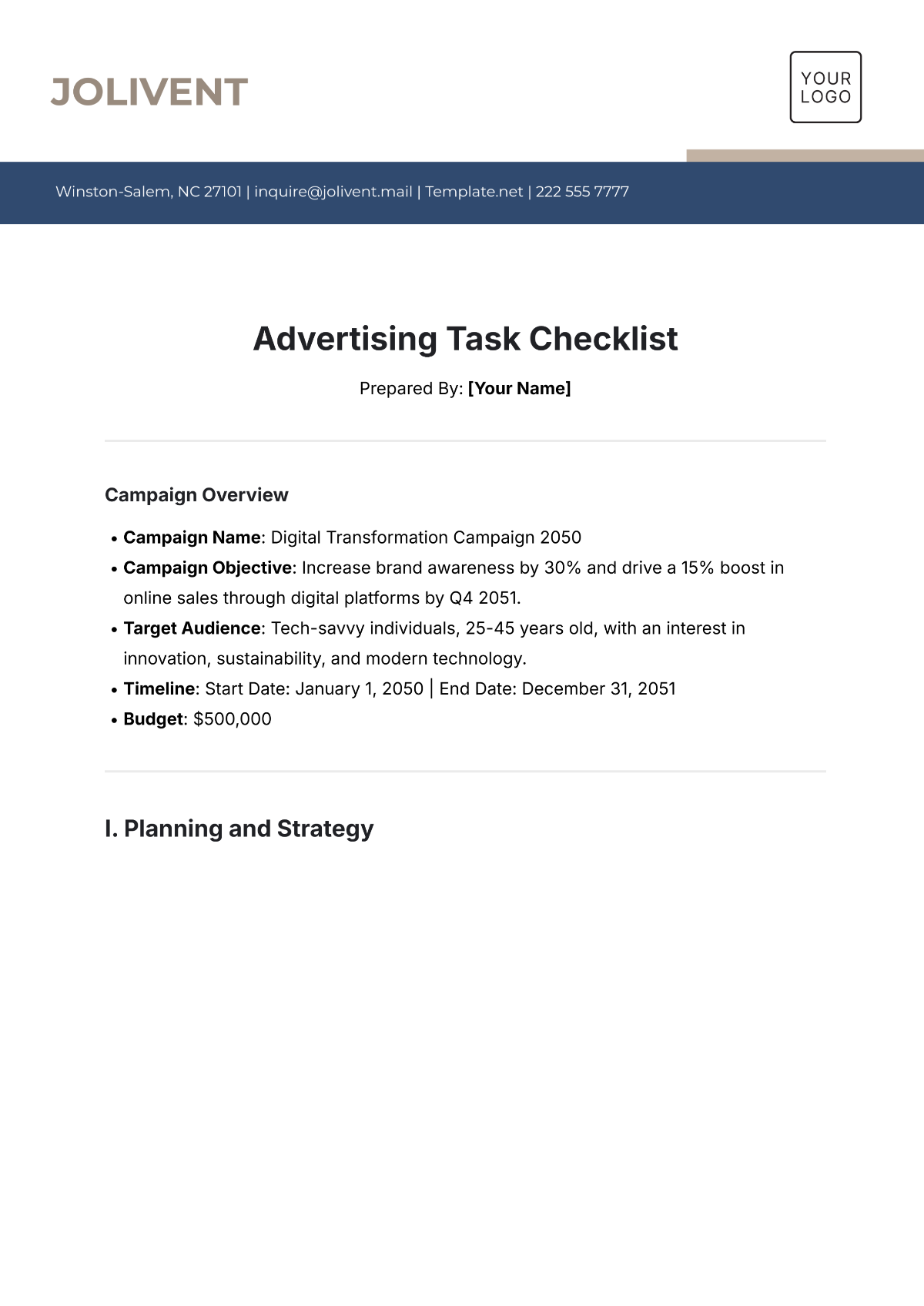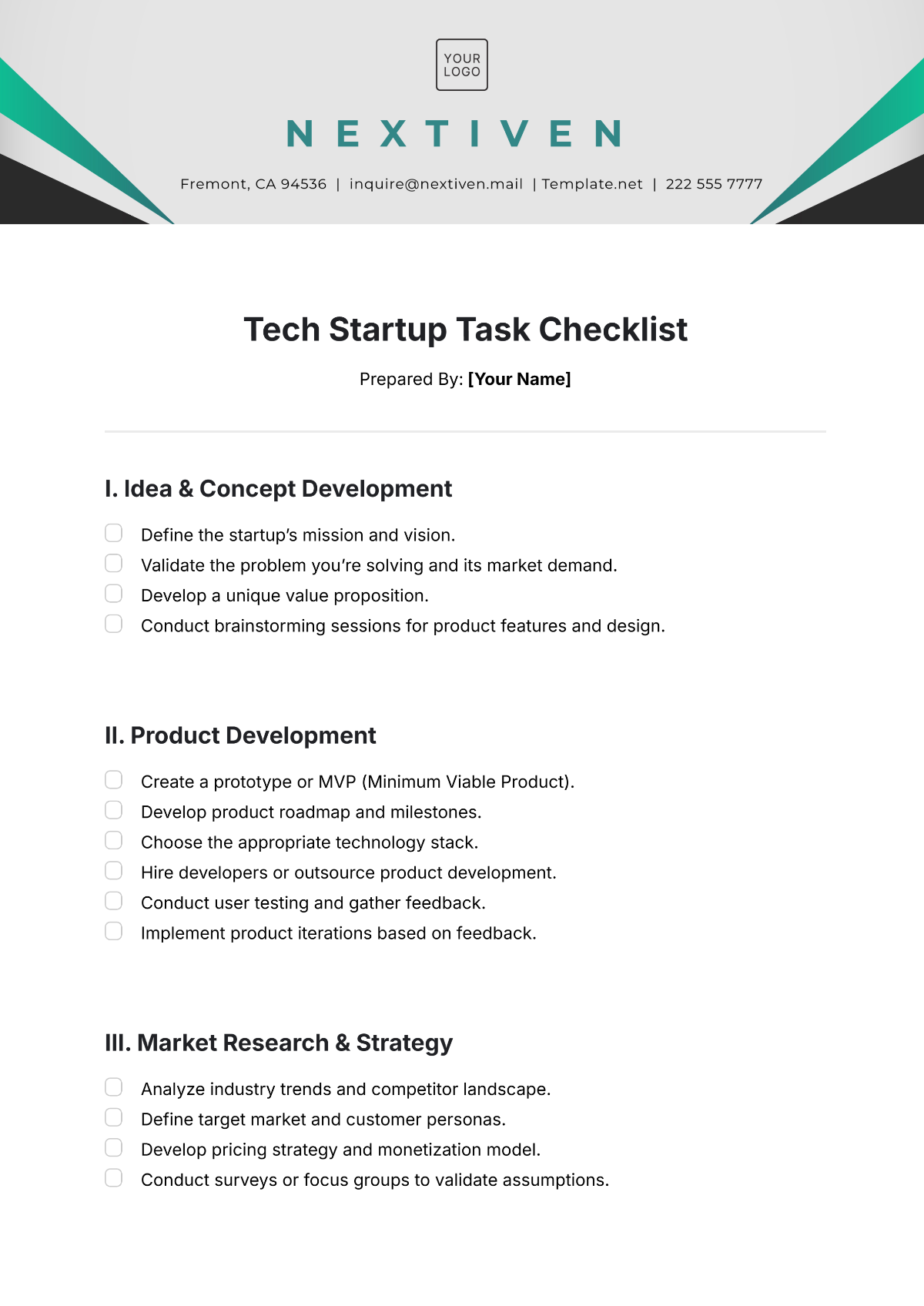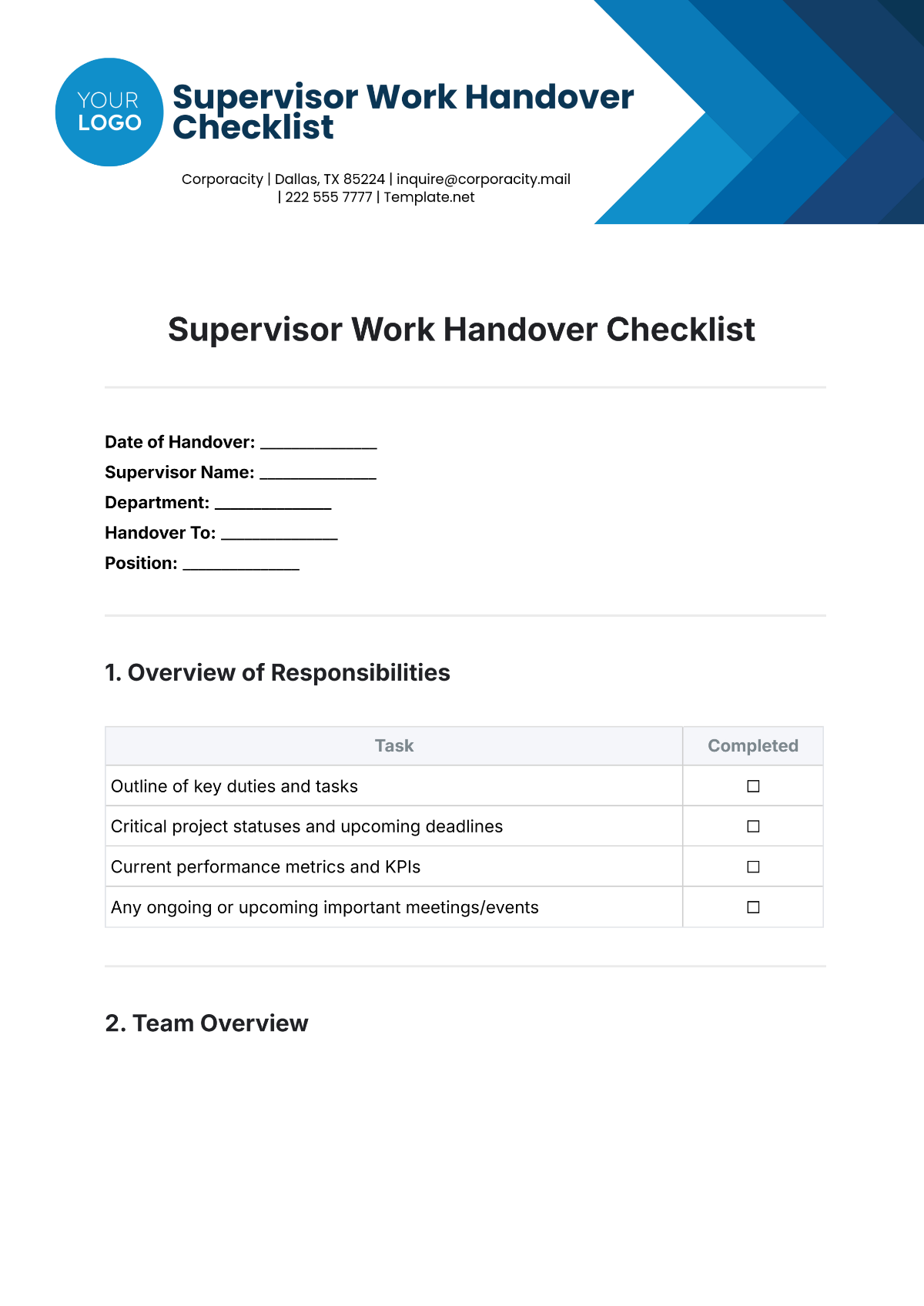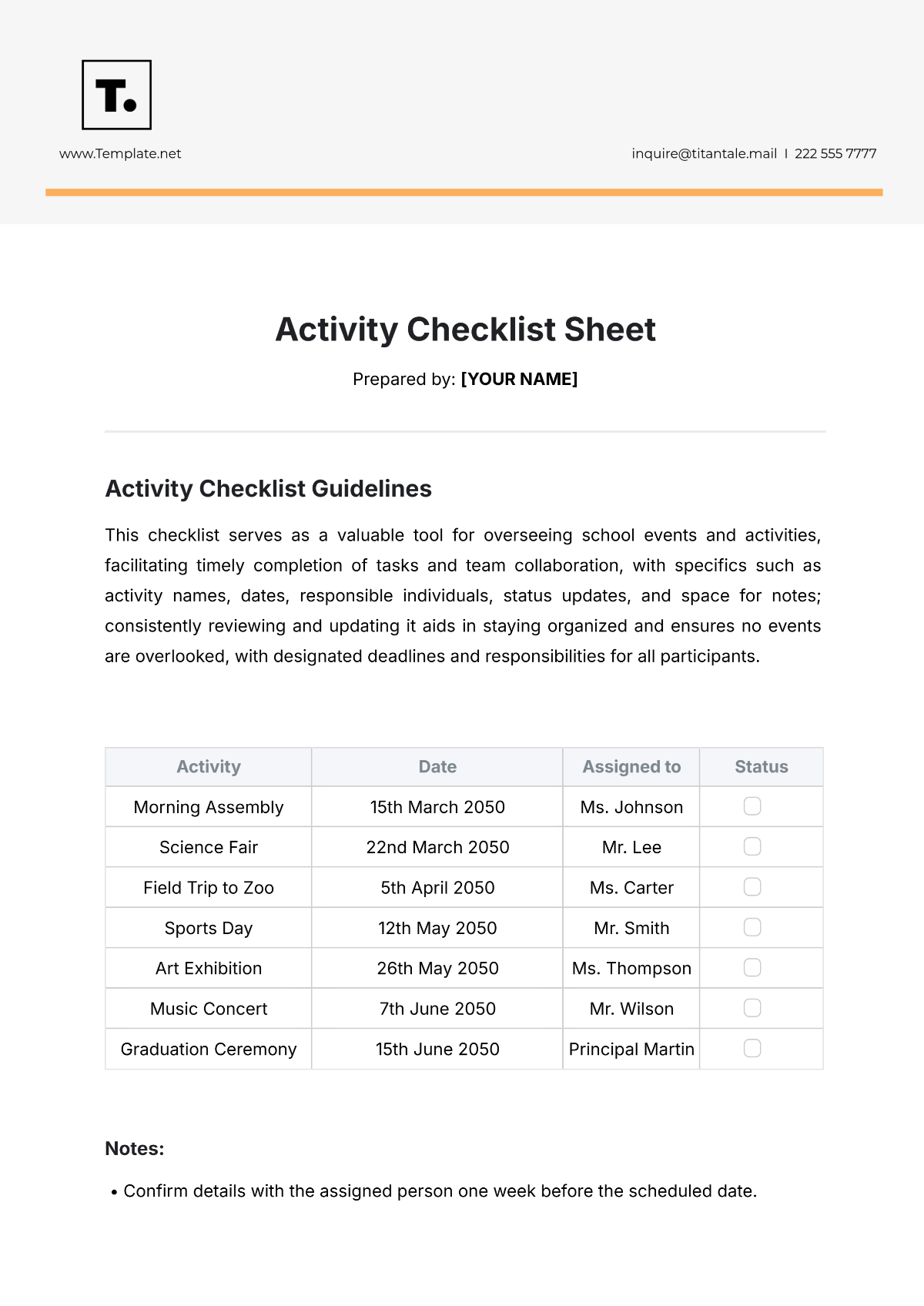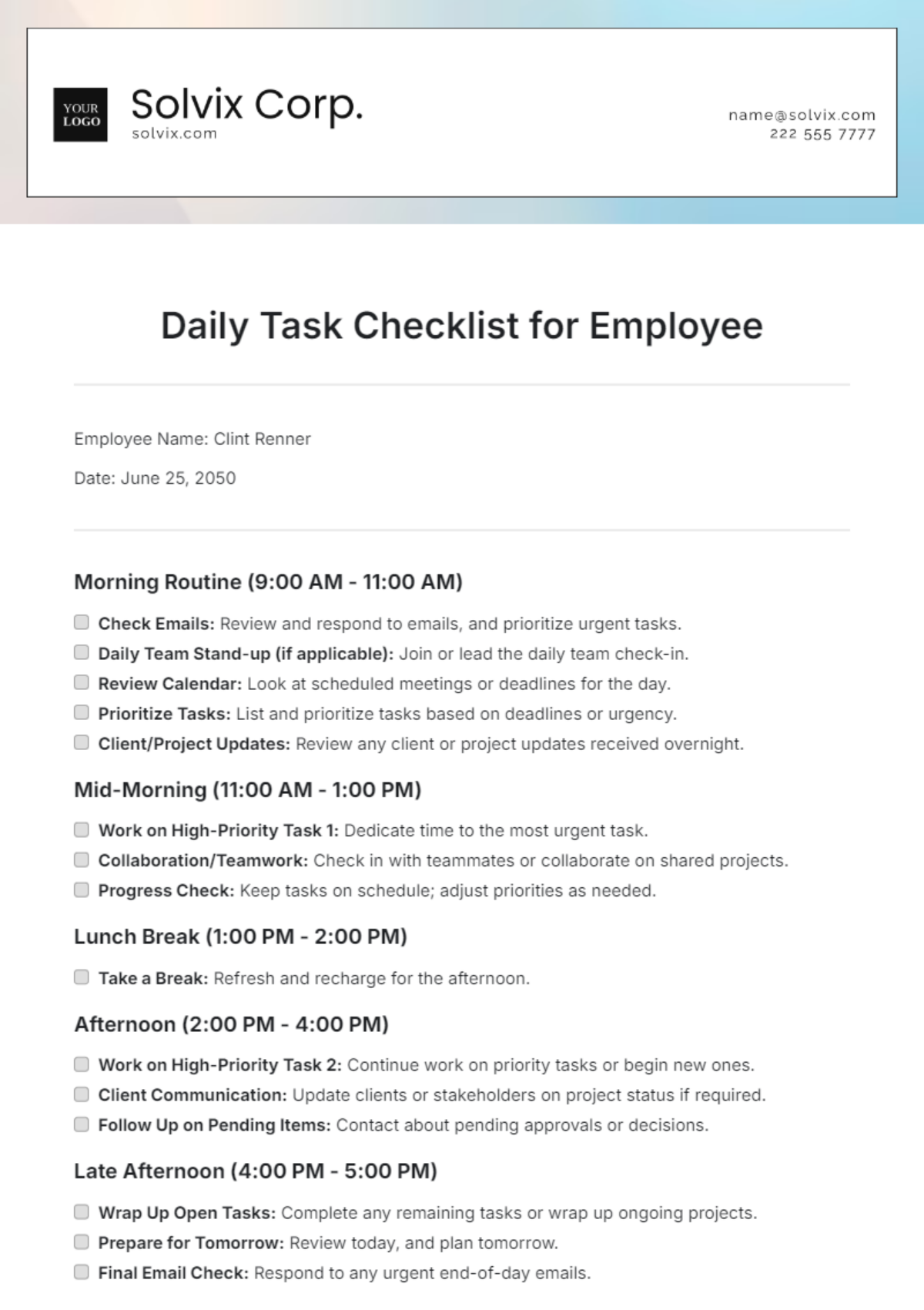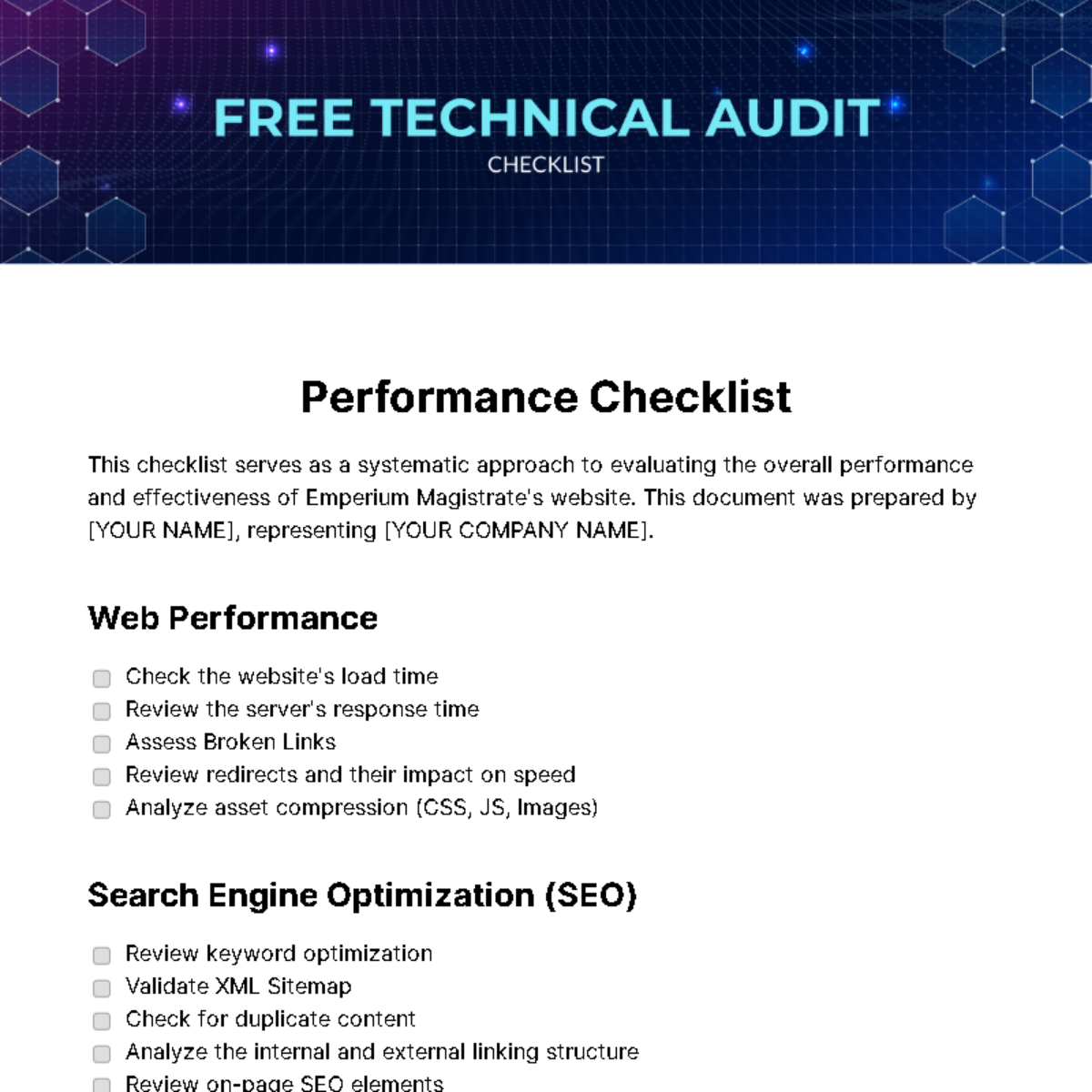Leadership Skill Development Task Checklist
Prepared by: [Your Name]
I. Self-Assessment and Reflection
Reflect on current leadership strengths and weaknesses.
Identify areas for improvement (communication, decision-making, etc.).
Set personal leadership goals and track progress.
II. Develop Communication Skills
Practice active listening during meetings and discussions.
Work on clear, concise, and assertive communication.
Encourage open feedback from peers and team members.
III. Emotional Intelligence (EQ)
Improve self-awareness by recognizing emotions and their impact on decisions.
Practice empathy to understand team members’ perspectives.
Develop emotional regulation techniques for better decision-making under pressure.
IV. Conflict Resolution
Learn and practice conflict resolution strategies.
Actively mediate conflicts and aim for win-win solutions.
Encourage a culture of collaboration and respect in the team.
V. Time Management
Prioritize tasks based on urgency and importance.
Delegate effectively to maximize team productivity.
Set realistic deadlines and manage team expectations.
VI. Decision-Making
Develop a structured approach for decision-making (e.g., pros and cons list, impact analysis).
Practice making decisions based on data and team input.
Take responsibility for the outcomes of decisions.
VII. Delegation Skills
Identify tasks to delegate based on team members’ strengths.
Provide clear instructions and expectations.
Follow up on delegated tasks and offer support when needed.
VIII. Team Building
Foster a collaborative environment where team members feel valued.
Organize team-building activities to improve trust and communication.
Recognize and celebrate team achievements.
IX. Coaching and Mentoring
Offer guidance and mentorship to team members.
Provide constructive feedback and support professional growth.
Develop individual development plans (IDPs) for team members.
X. Adaptability and Flexibility
Stay open to change and new ideas.
Lead through uncertainty by maintaining a positive attitude.
Encourage team members to adapt to evolving circumstances.
XI. Strategic Thinking
Set long-term goals and align daily actions with broader organizational objectives.
Evaluate risks and rewards when making strategic decisions.
Stay informed about industry trends and adapt strategies accordingly.
XII. Networking and Relationship Building
Build relationships with key stakeholders and peers.
Attend leadership seminars, conferences, or networking events.
Seek mentorship from experienced leaders.
XIII. Regular Feedback and Self-Improvement
Solicit regular feedback from team members and superiors.
Implement feedback and continuously strive to improve leadership effectiveness.
Set aside time for personal and professional growth activities.
